XRC PRO: Open Source RC Transmitter and Receiver System
2024-11-18 | By DIY TECHOS
License: General Public License ADCs Analog Batteries
Overview
The XRC PRO is an advanced, open source RC transmitter and receiver system designed to offer professional-level performance in a compact and customizable package. Built around the STM32F103C8T6 microcontroller and the NRF24L01 wireless transceiver module, the XRC PRO provides precise, real-time control for various RC applications like drones, cars, and boats. With a compact design, robust functionality, and user-friendly interface, the XRC PRO is an ideal tool for both hobbyists and professionals.
Key Features:
OLED Display: Shows real-time signal strength, settings, battery percentage, and control data for easy monitoring.
Trim Buttons & Rotary Encoder: Provides fine-tuned control and simple menu navigation, enhancing usability.
Multi-Menus: Features an intuitive menu system for adjusting channel settings, polarity, and output modes.
PPM & SBUS Outputs: Offers versatile output options, supporting a range of RC receivers for greater functionality.
NRF24L01 Power Control: Includes adjustable signal strength settings, allowing for both short- and long-range control.
Stick Calibration: Enables real-time stick calibration with visual feedback on the OLED display for precise adjustments.
Compact Receivers: Offers two efficient receiver options for 8-channel PWM+PPM and PPM+SBUS outputs, designed for optimal performance.
Throttle Mode: Allows selection between left or right throttle hand mode to suit user preferences.
PC Simulator Compatibility: Supports computer-based simulators through PPM output, with an option to toggle PPM output on or off.
Express ELRS Integration: Compatible with ELRS modules via PPM output when used with an ELRS adapter.
Buzzer On/Off Mode: Enables users to easily toggle the buzzer for audio feedback during operation.
Adjustable Setting Unit: Allows customization of measurement units (e.g., degrees, percentages) based on user preference.
Battery Voltage Calibration: Calibrate battery voltage display for accurate percentage readings, ensuring reliable battery monitoring.
Reset to Default Settings: Provides an option to restore all settings to default quickly for easy setup and troubleshooting.
Tech Specs
Microcontroller: STM32F103C8T6 ARM® Cortex®-M3
ARM® Cortex®-M3 core up to 72 MHz
20KB onboard SRAM
64KB Flash memory
Wireless Module: NRF24L01 GT24 Mini
Operates on 2.4 GHz ISM band
High data rate up to 2 Mbps
Supports multiple data pipes for communication
Display: 0.96" OLED
Displays signal strength, battery percentage, and control data
Power: AMS117 3.3V Regulator
Input voltage range from 7.4V to 12V (supports 2S to 3S LiPo batteries)
Weight: 200g (excluding battery)
Dimensions: 160 mm x 120 mm x 40 mm (excluding antenna)
Enclosure: DJI Phantom 2 Remote (customizable based on user preference; Arduino joysticks can be used as an alternative)
Transmitter Components
1.STM32F103C8T6: ARM microcontroller, desoldered from development board and soldered to transmitter PCB – Quantity: 1
STM32F103C8T6 STMicroelectronics | Integrated Circuits (ICs) | DigiKey
2.NRF24L01 GT24 Mini: Wireless Transceiver Module – Quantity: 1
2.E11 Rotary Encoder (ENC): Rotary encoder for menu navigation – Quantity: 1
3.SMD 8MHz Crystal (3225): Oscillator for STM32 – Quantity: 1
Crystals | Electronic Components Distributor DigiKey
4.FC-135 32.768kHz Crystal: RTC crystal – Quantity: 1
Crystals | Electronic Components Distributor DigiKey
5.CH340C SMD: USB to Serial Converter – Quantity: 1
6.Y1 (8050) NPN Transistor: General-purpose transistor – Quantity: 2
Single Bipolar Transistors | Bipolar (BJT) | Transistors | Electronic Components Distributor DigiKey
7.1AM (3904) NPN Transistor: General-purpose transistor – Quantity: 1
Single Bipolar Transistors | Bipolar (BJT) | Transistors | Electronic Components Distributor DigiKey
8.0.96" OLED Display: For displaying transmitter status and menu – Quantity: 1
LCD, OLED, Graphic | Electronic Components Distributor DigiKey
9.10k Ohm Resistor (SMD): Resistor for various circuits – Quantity: 4
0.125W, 1/8W Chip Resistor - Surface Mount | Electronic Components Distributor DigiKey
10.1k Ohm Resistor (SMD): Resistor for various circuits – Quantity: 4
1 kOhms 0.125W, 1/8W Chip Resistor - Surface Mount | Electronic Components Distributor DigiKey
11.100nF Capacitor (SMD): Signal filtering capacitor – Quantity: 20
12.Buzzer: Audio feedback for transmitter alerts – Quantity: 1
Alarms, Buzzers, and Sirens | Electronic Components Distributor DigiKey
13.AMS117 (3.3V Voltage Regulator): Provides 3.3V to components – Quantity: 1
14.10uF Capacitor: Power stabilization and filtering – Quantity: 2
10 µF Through Hole Aluminum Electrolytic Capacitors | Electronic Components Distributor DigiKey
15.Male Headers: Connector for modules/components – Quantity: 30
16.DJI Phantom 2 Remote: Used as the transmitter enclosure; alternatives include any compatible remote/joystick.
Receiver Components
Receiver (PWM+PPM)
1.STM32F103C8T6: ARM microcontroller, desoldered from development board and soldered to receiver PCB – Quantity: 1
STM32F103C8T6 STMicroelectronics | Integrated Circuits (ICs) | DigiKey
2.NRF24L01 GT24 Mini: Wireless Transceiver Module – Quantity: 1
3.SMD 8MHz Crystal (3225): Oscillator for STM32 – Quantity: 1
Crystals | Electronic Components Distributor DigiKey
4.1AM (3904) NPN Transistor: General-purpose transistor – Quantity: 1
Single Bipolar Transistors | Bipolar (BJT) | Transistors | Electronic Components Distributor DigiKey
5.AMS117 (3.3V Voltage Regulator): Provides 3.3V to components – Quantity: 1
6.10uF Capacitor: Power stabilization and filtering – Quantity: 2
10 µF Through Hole Aluminum Electrolytic Capacitors | Electronic Components Distributor DigiKey
7.100nF Capacitor (SMD): Signal filtering capacitor – Quantity: 4
8.Male Headers: Connector for modules/components – Quantity: 30
Receiver (PPM+SBUS)
1.STM32F103C8T6: ARM microcontroller, desoldered from development board and soldered to receiver PCB – Quantity: 1
STM32F103C8T6 STMicroelectronics | Integrated Circuits (ICs) | DigiKey
2.NRF24L01 GT24 Mini: Wireless Transceiver Module – Quantity: 1
3.SMD 8MHz Crystal (3225): Oscillator for STM32 – Quantity: 1
Crystals | Electronic Components Distributor DigiKey
4.1AM (3904) NPN Transistor: General-purpose transistor – Quantity: 1
Single Bipolar Transistors | Bipolar (BJT) | Transistors | Electronic Components Distributor DigiKey
5.AMS117 (3.3V Voltage Regulator): Provides 3.3V to components – Quantity: 1
6.10uF Capacitor: Power stabilization and filtering – Quantity: 2
10 µF Through Hole Aluminum Electrolytic Capacitors | Electronic Components Distributor DigiKey
7.100nF Capacitor (SMD): Signal filtering capacitor – Quantity: 4
8.Male Headers: Connector for modules/components – Quantity: 30
Schematic and PCB Layout
The XRC PRO has multiple PCBs and it consists of three main PCBs: the Transmitter PCB, the 8-channel PWM+PPM Receiver PCB, and the PPM+SBUS Receiver PCB. Each PCB was carefully designed for space efficiency and optimal performance.
Transmitter PCBs
The Transmitter PCB is built around the STM32F103C8T6, NRF24L01 module, OLED display, and various input buttons (trim, menu, encoder). The schematic includes connections for power management (5v to 3.3v), data lines for the OLED, and button inputs for settings navigation etc.
Schematic and PCB Layout
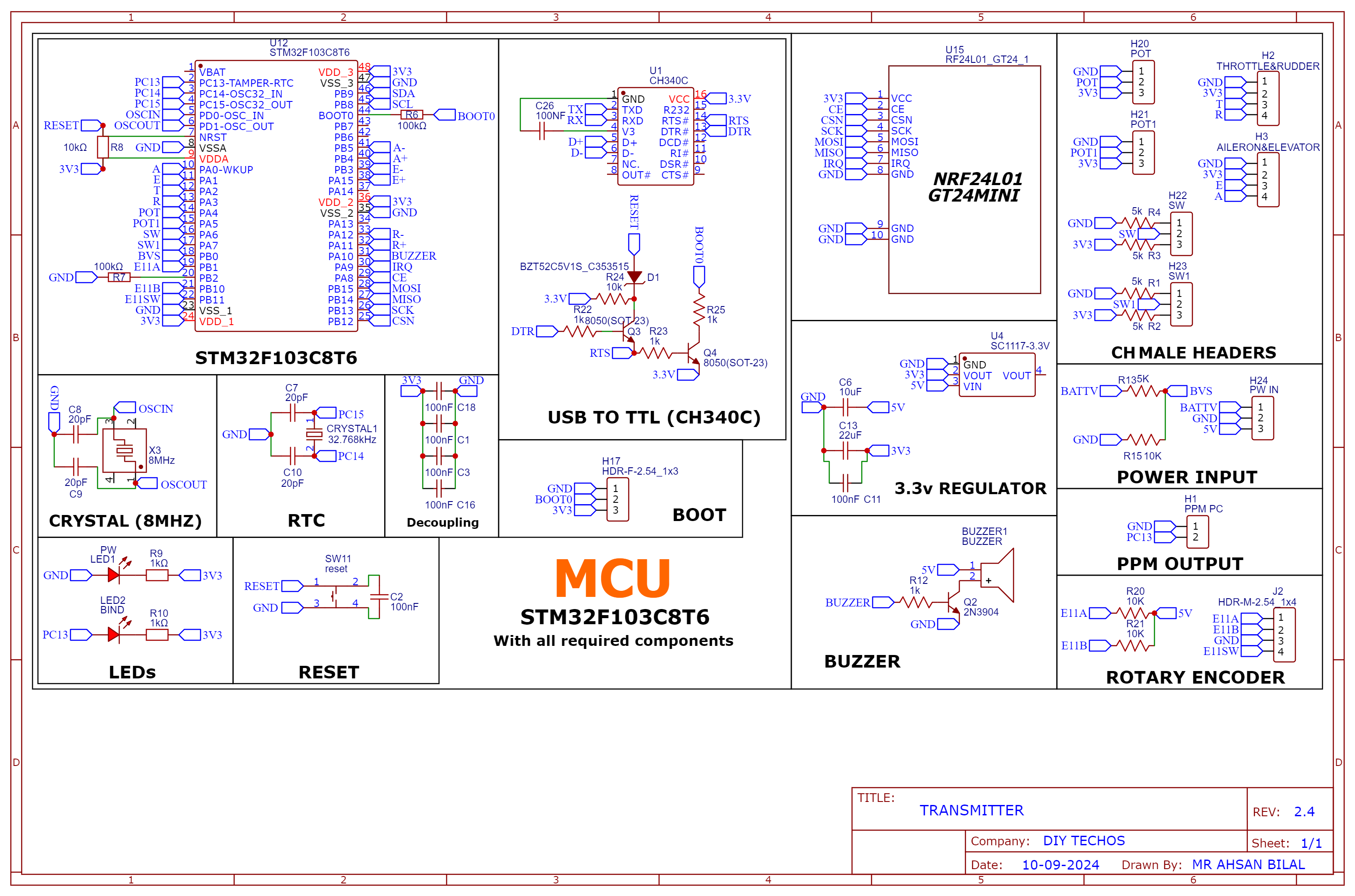
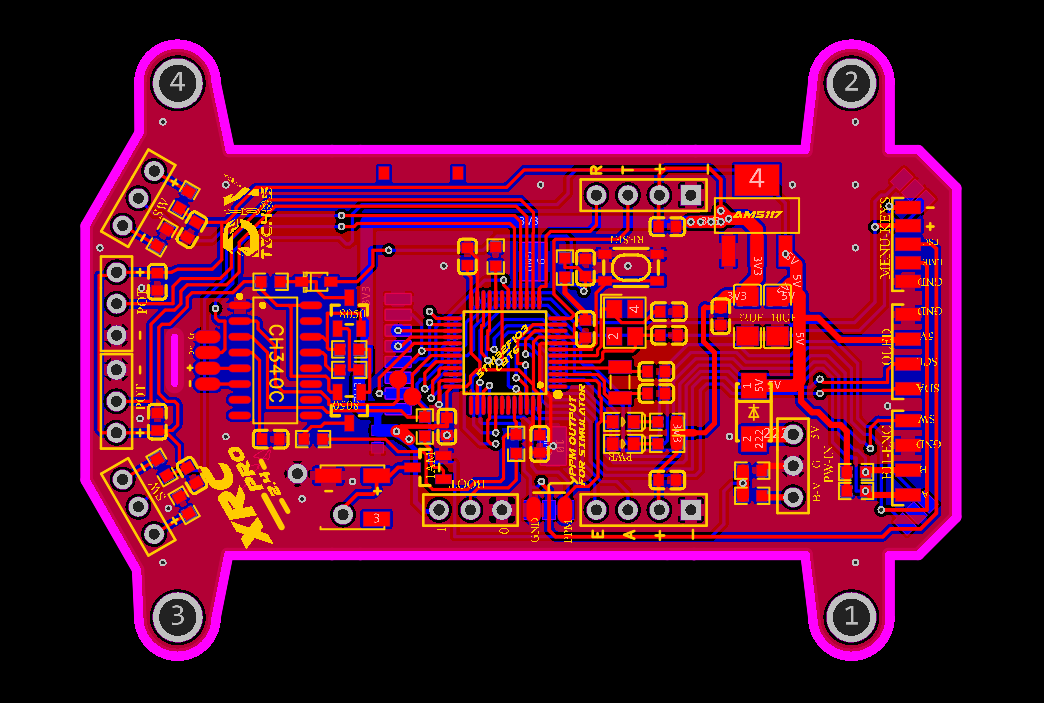
2D and 3D Preview
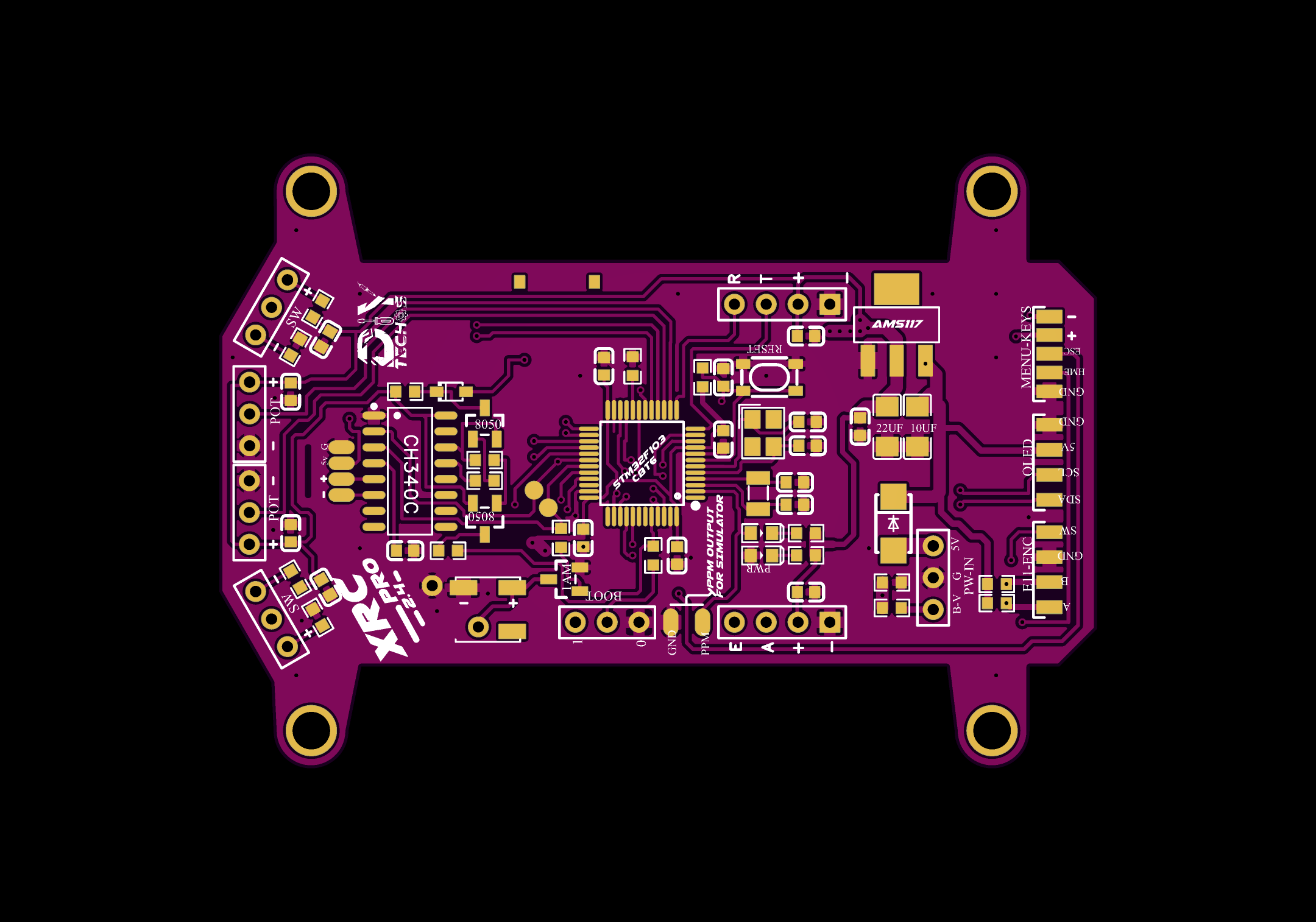
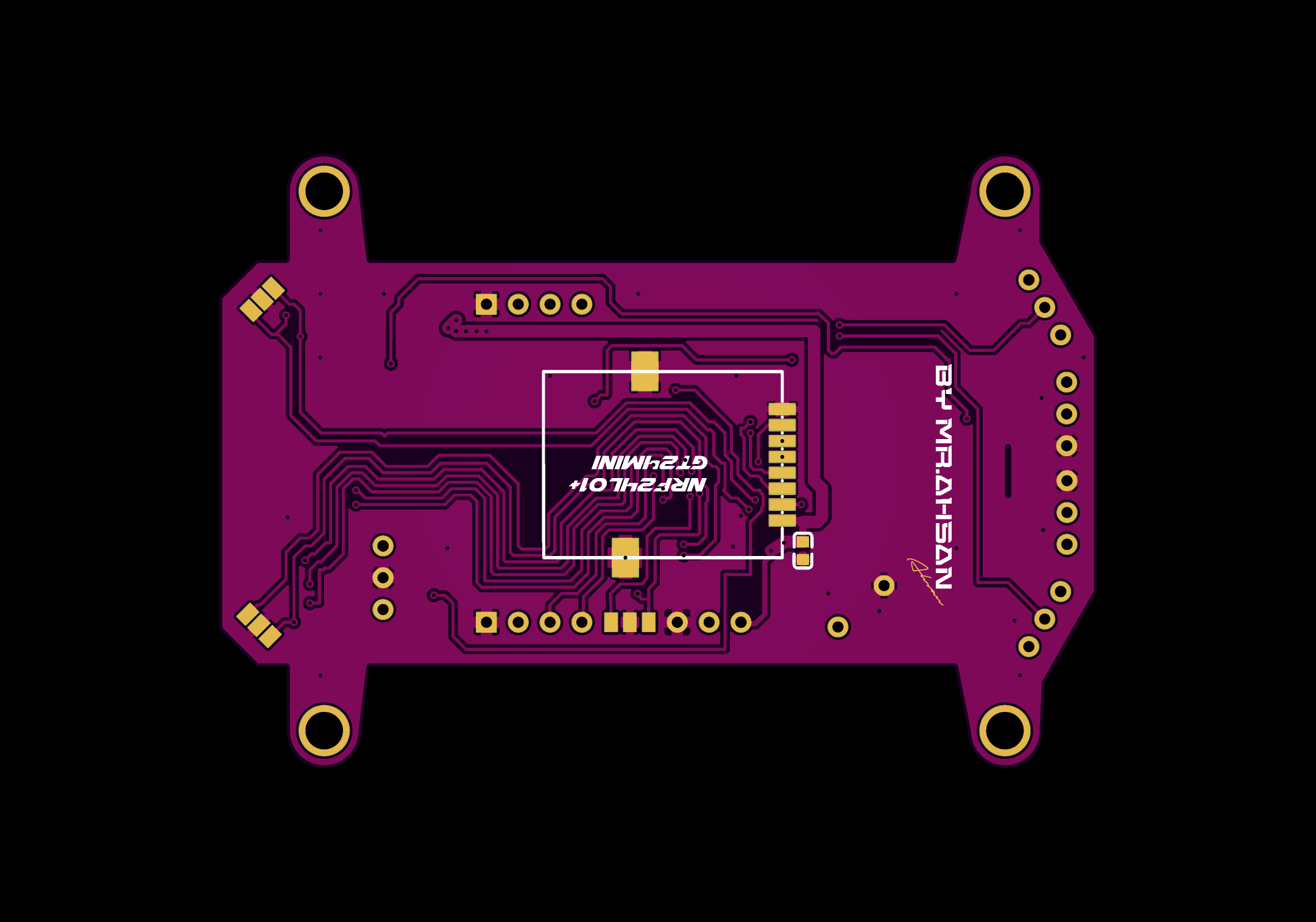


Final Result

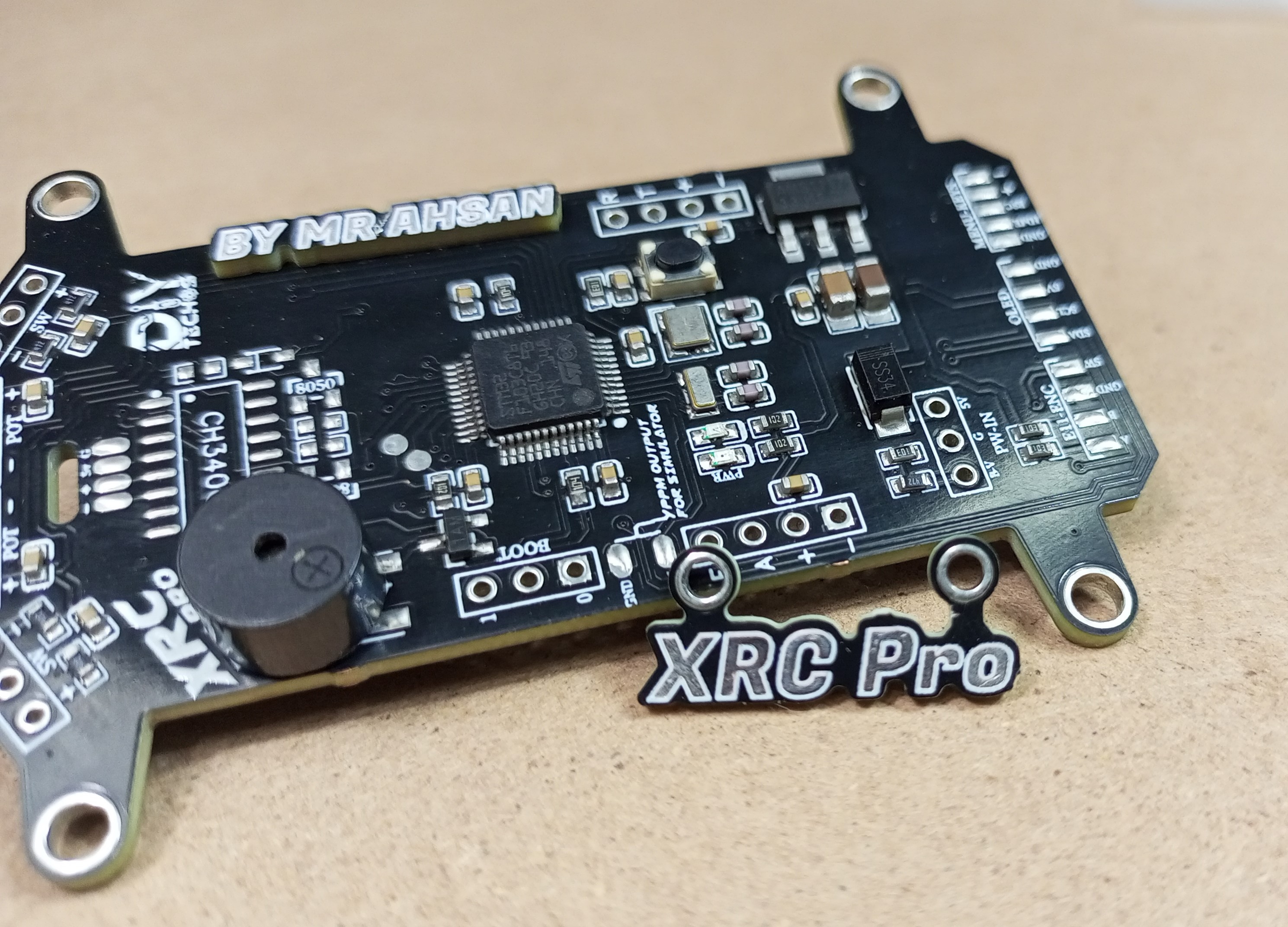
Menu-Keys
Schematic and PCB Layout
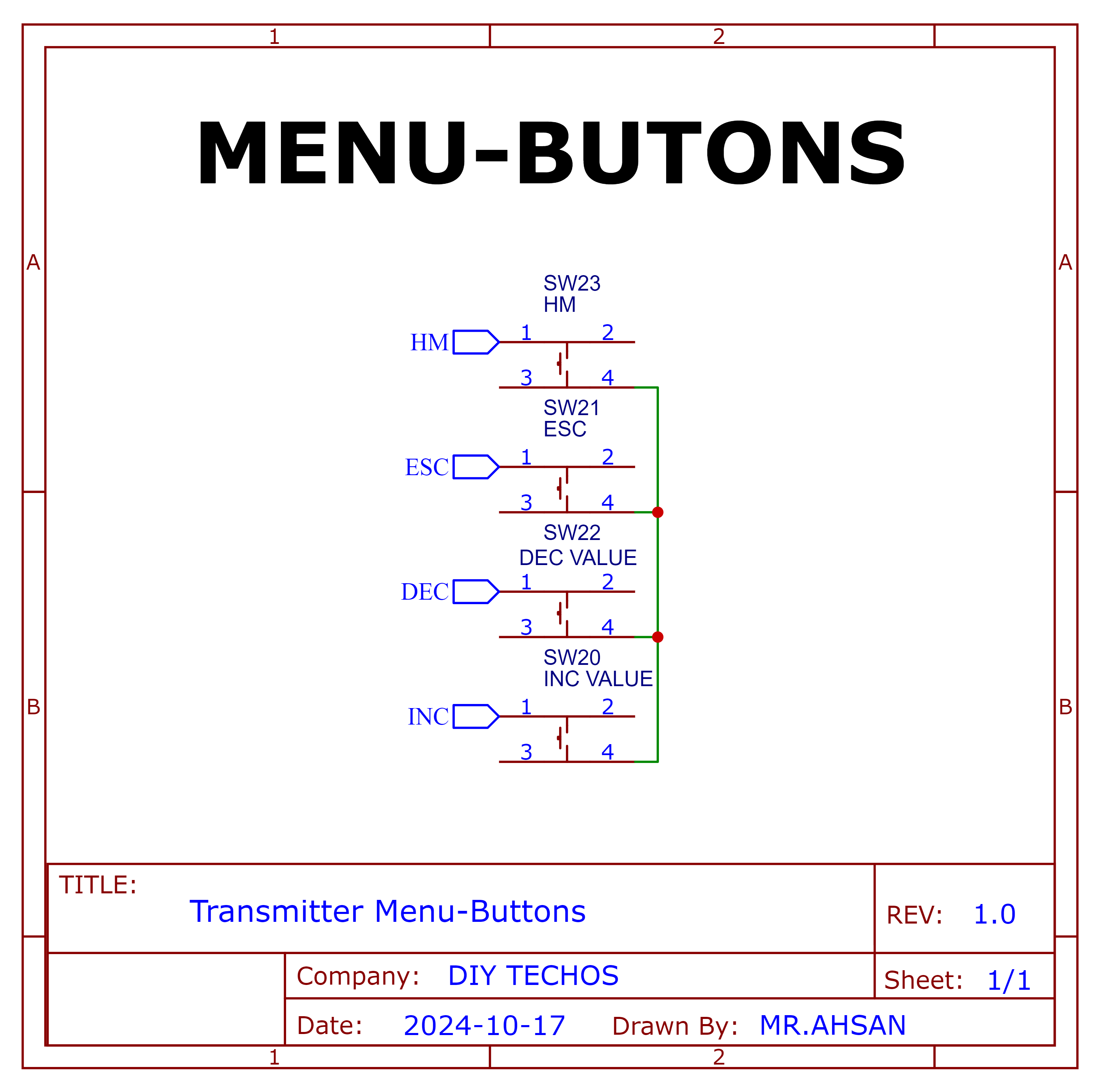
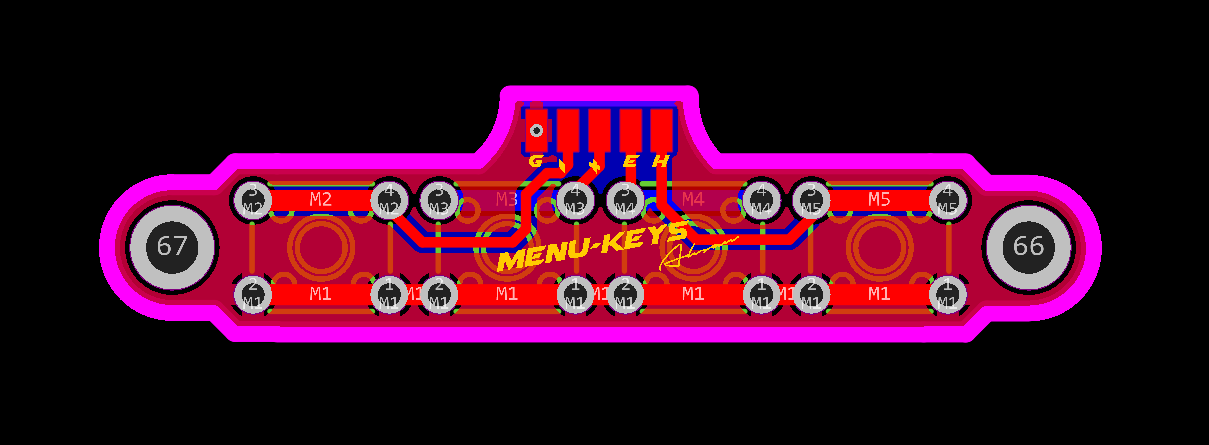
2D and 3D Preview



Final Result
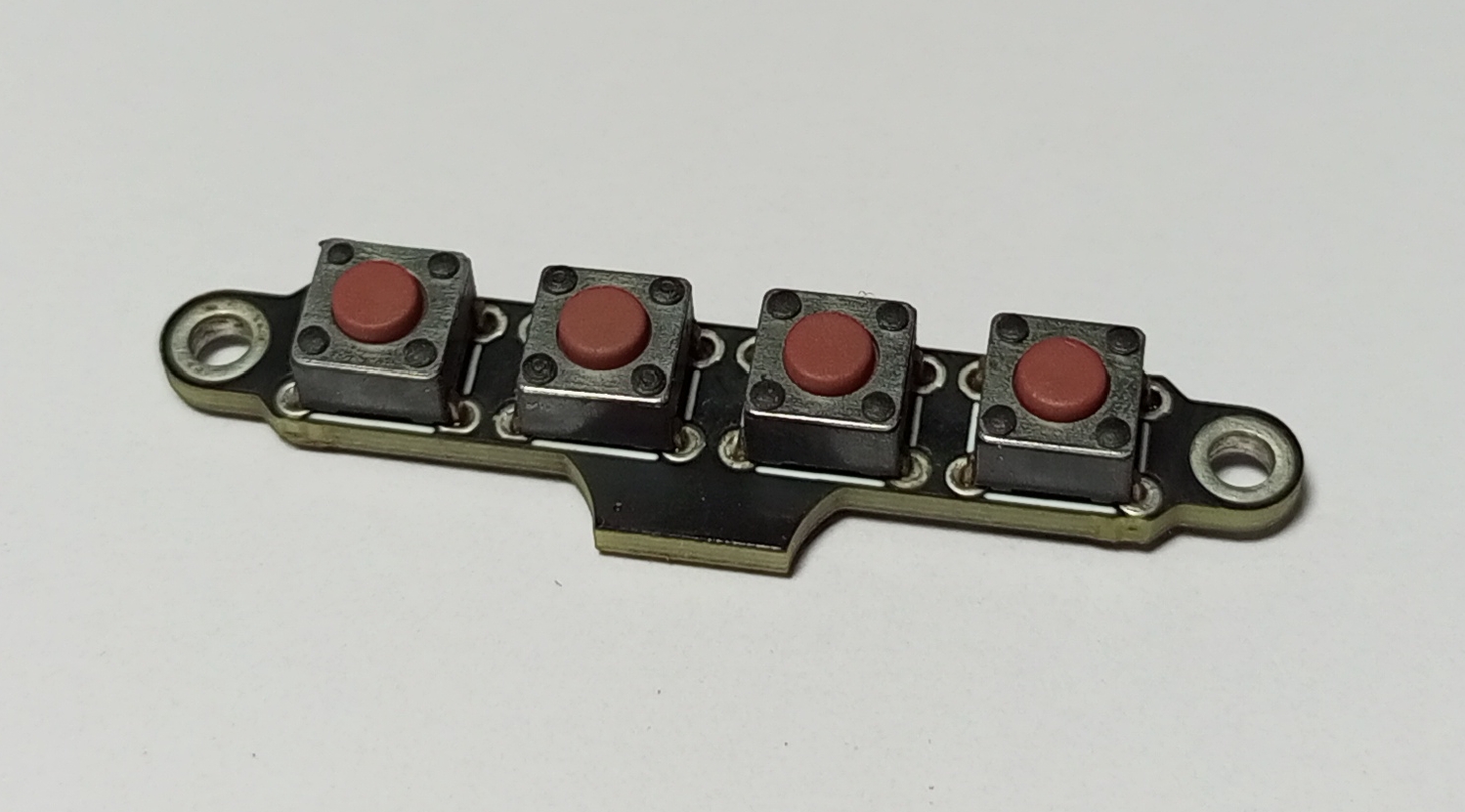
Rotary Encoder+Switch
Schematic and PCB Layout
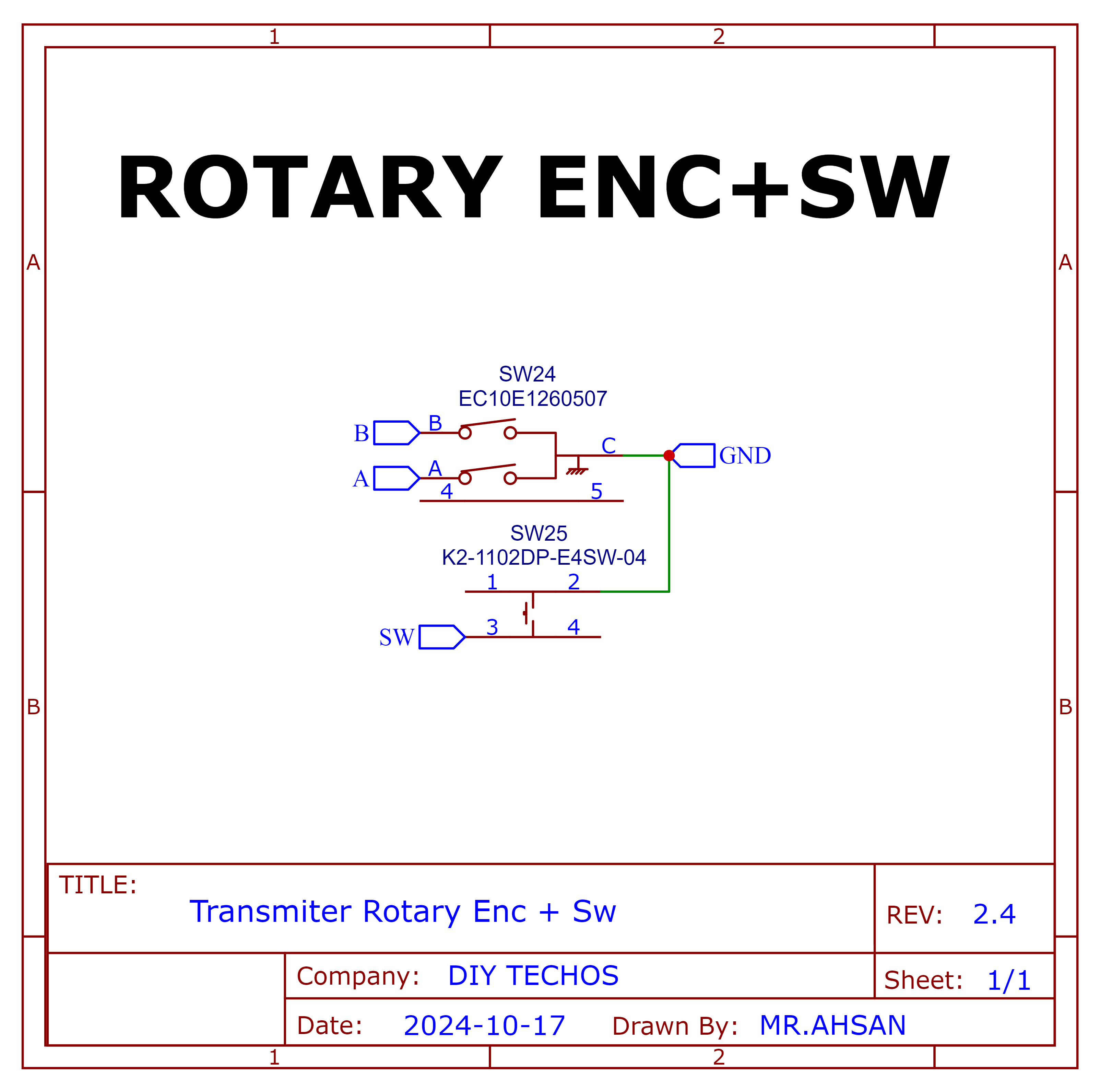
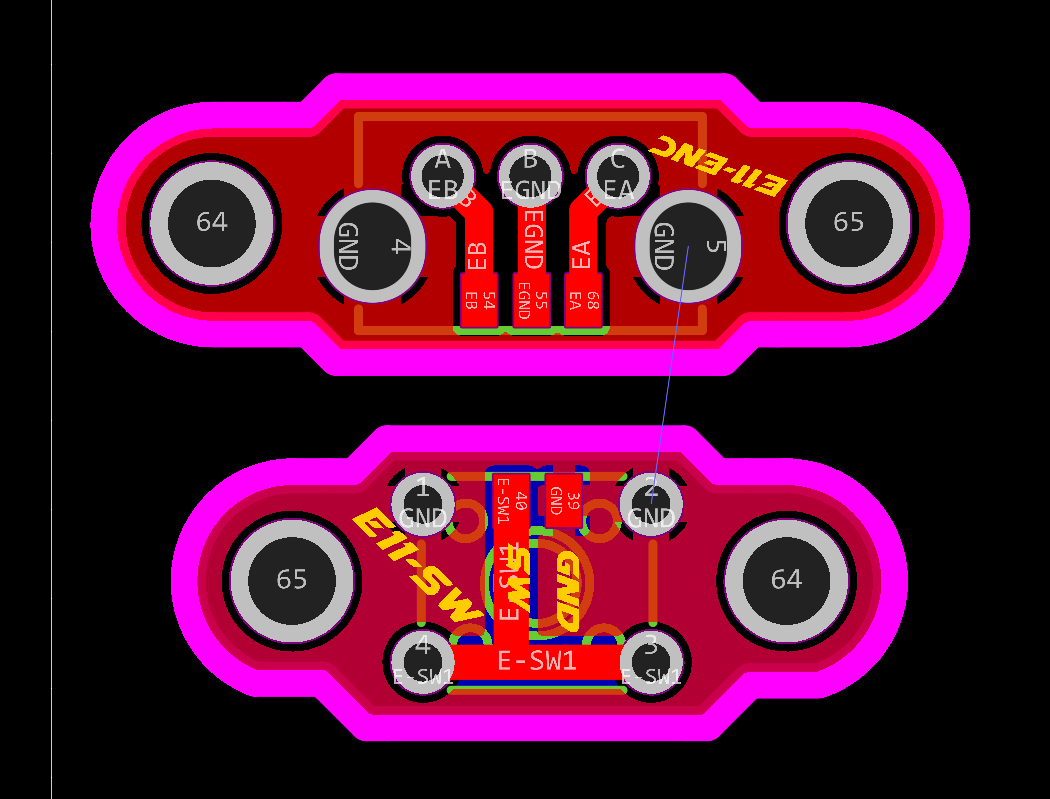
2D and 3D Preview
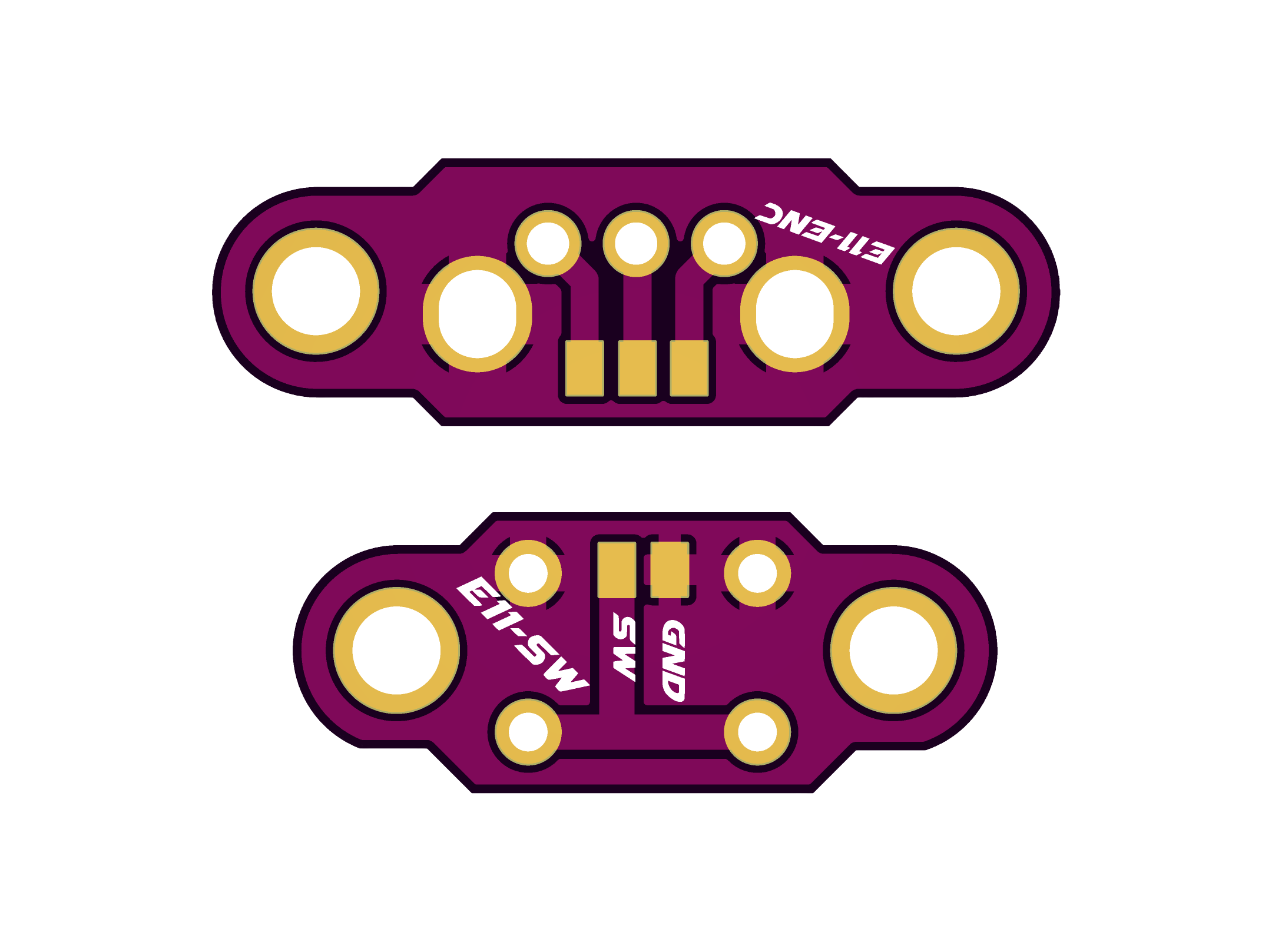


Final Result
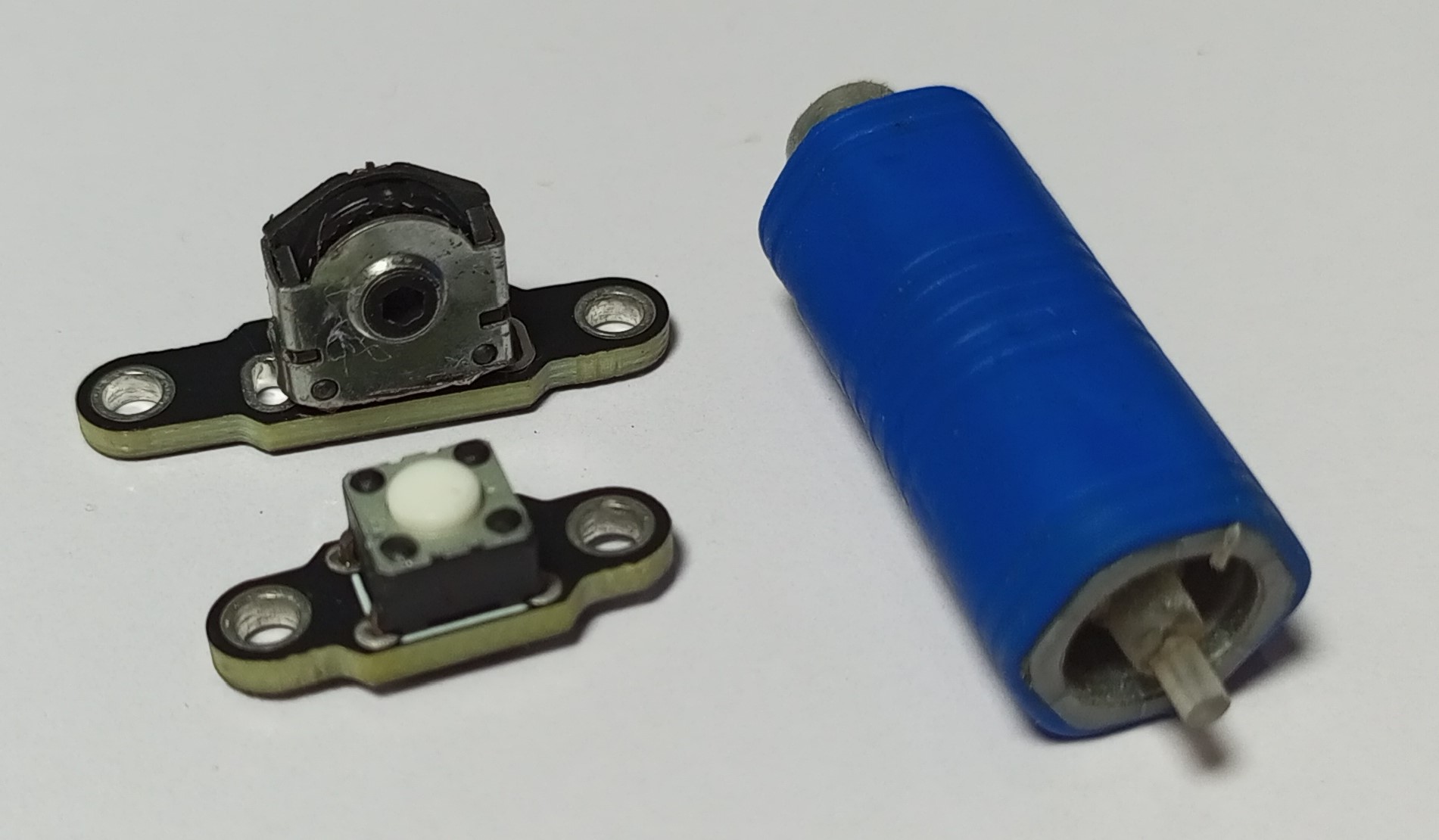
Trim Buttons
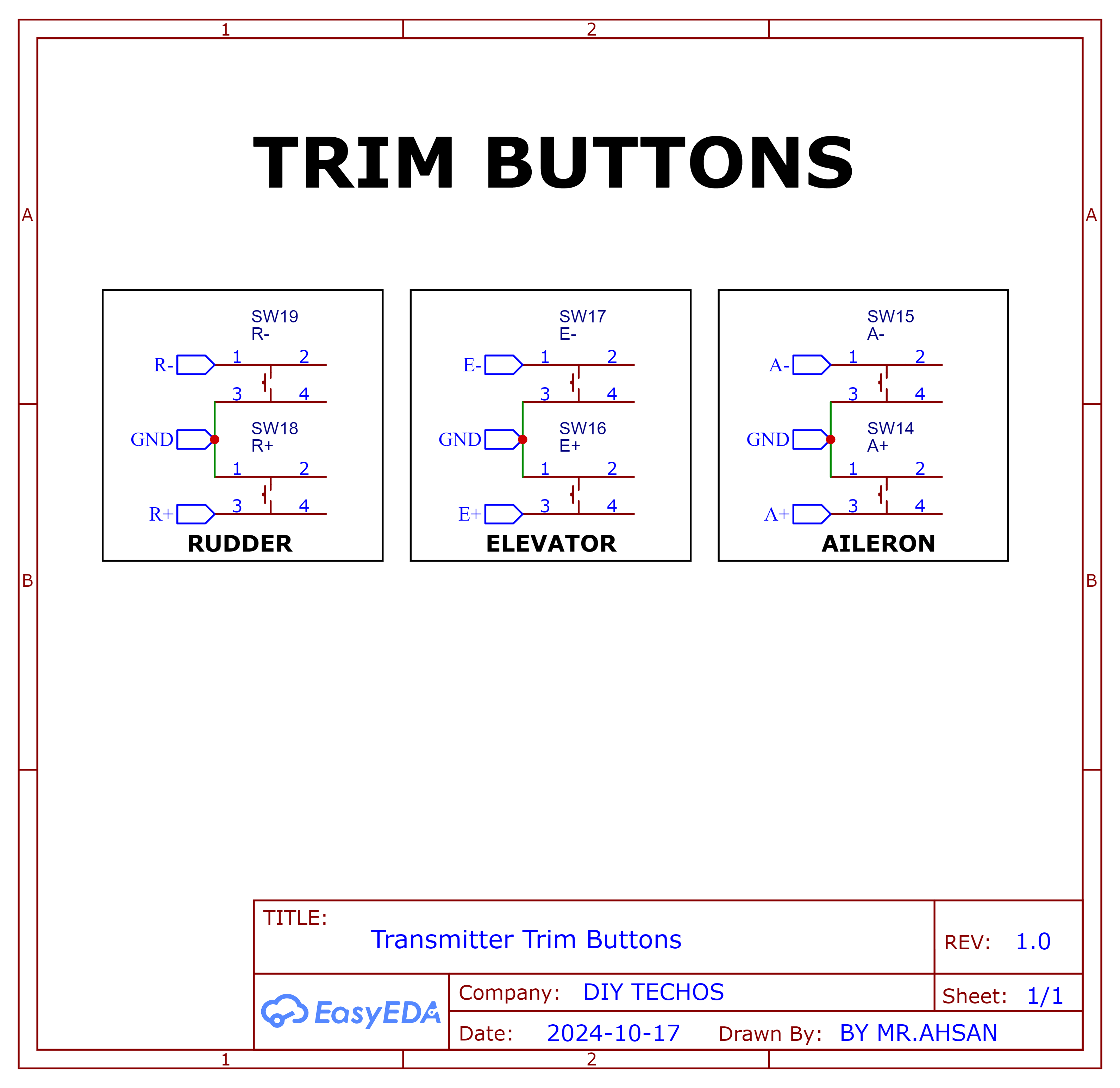
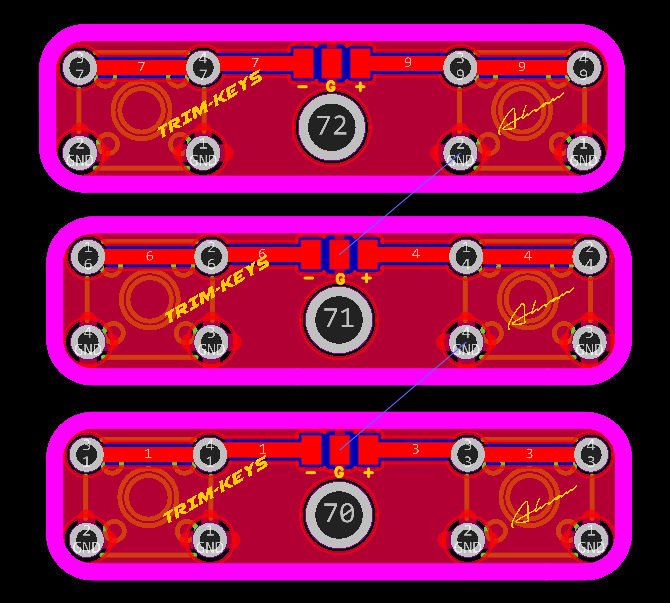
2D and 3D Preview
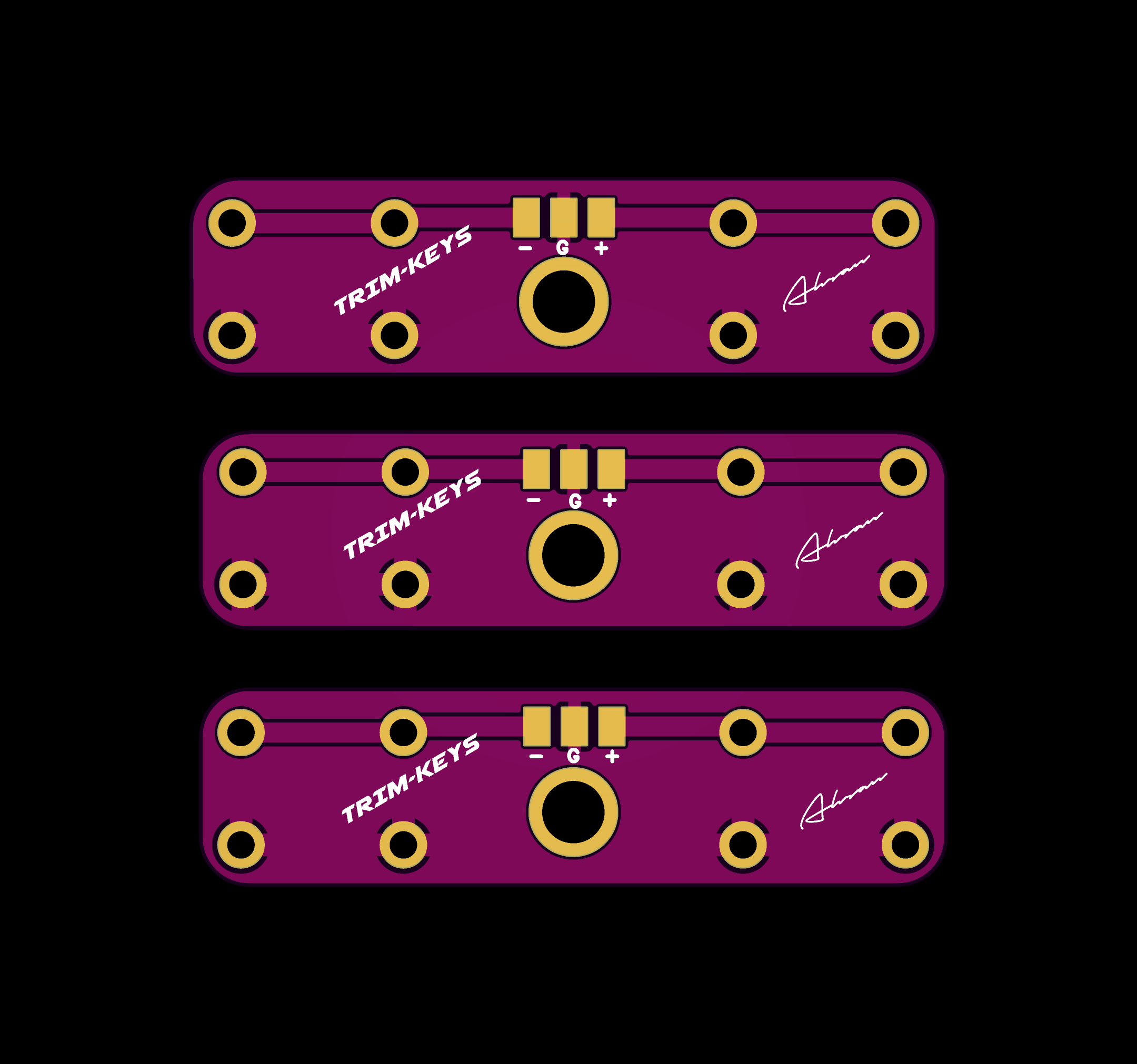


Final Result
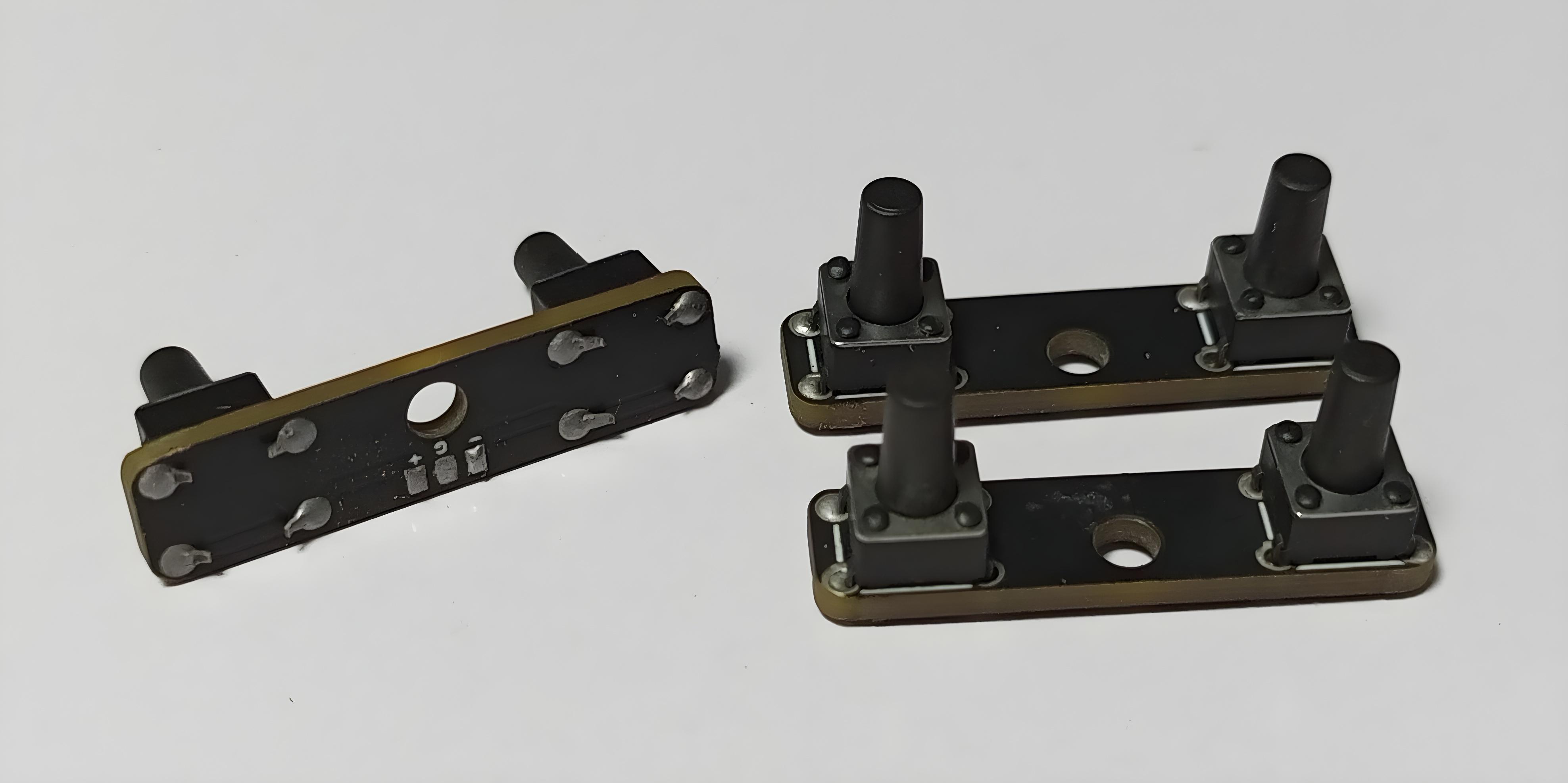
Type C Jack
Schematic and PCB Layout
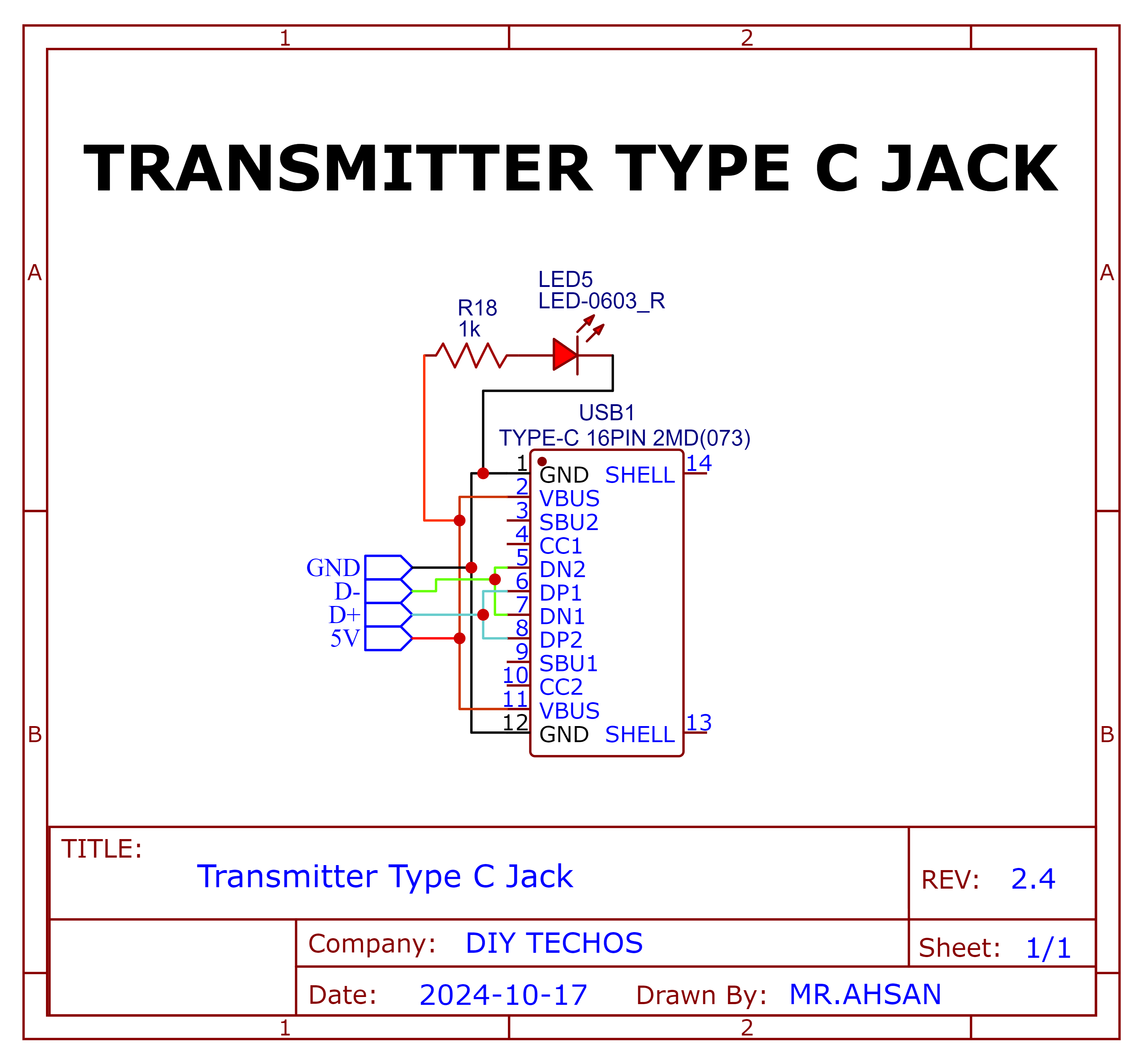
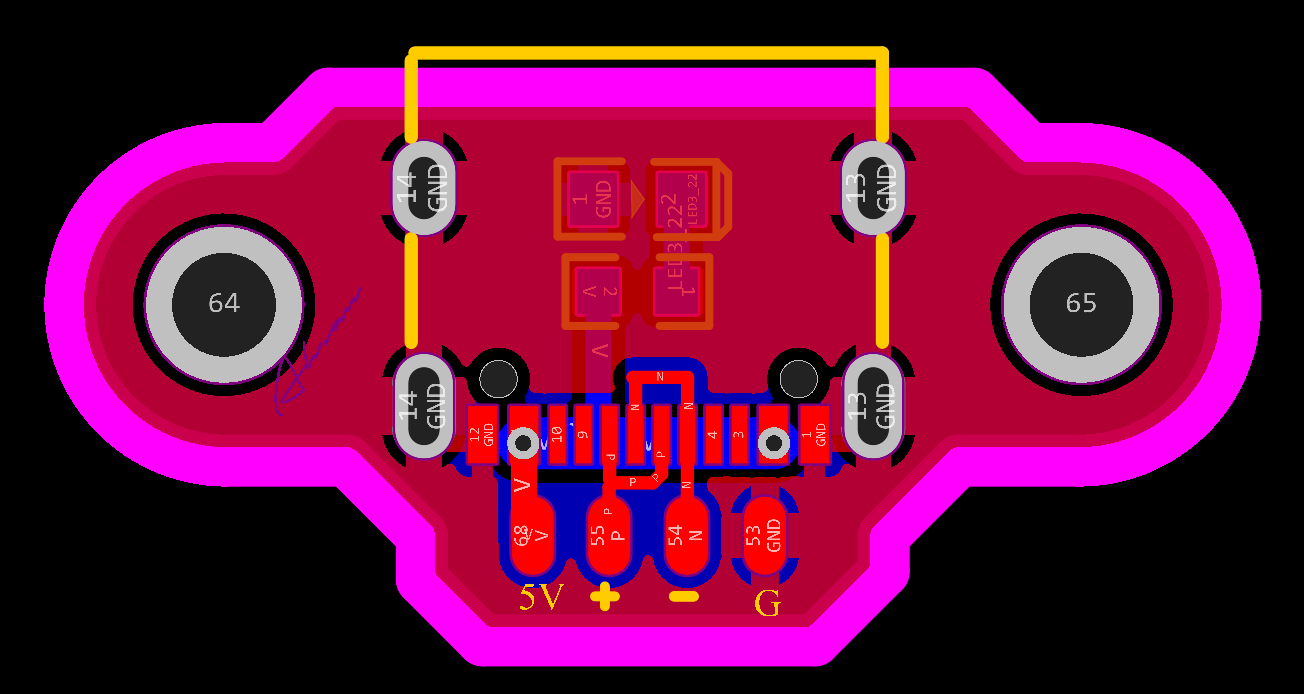
2D and 3D Preview
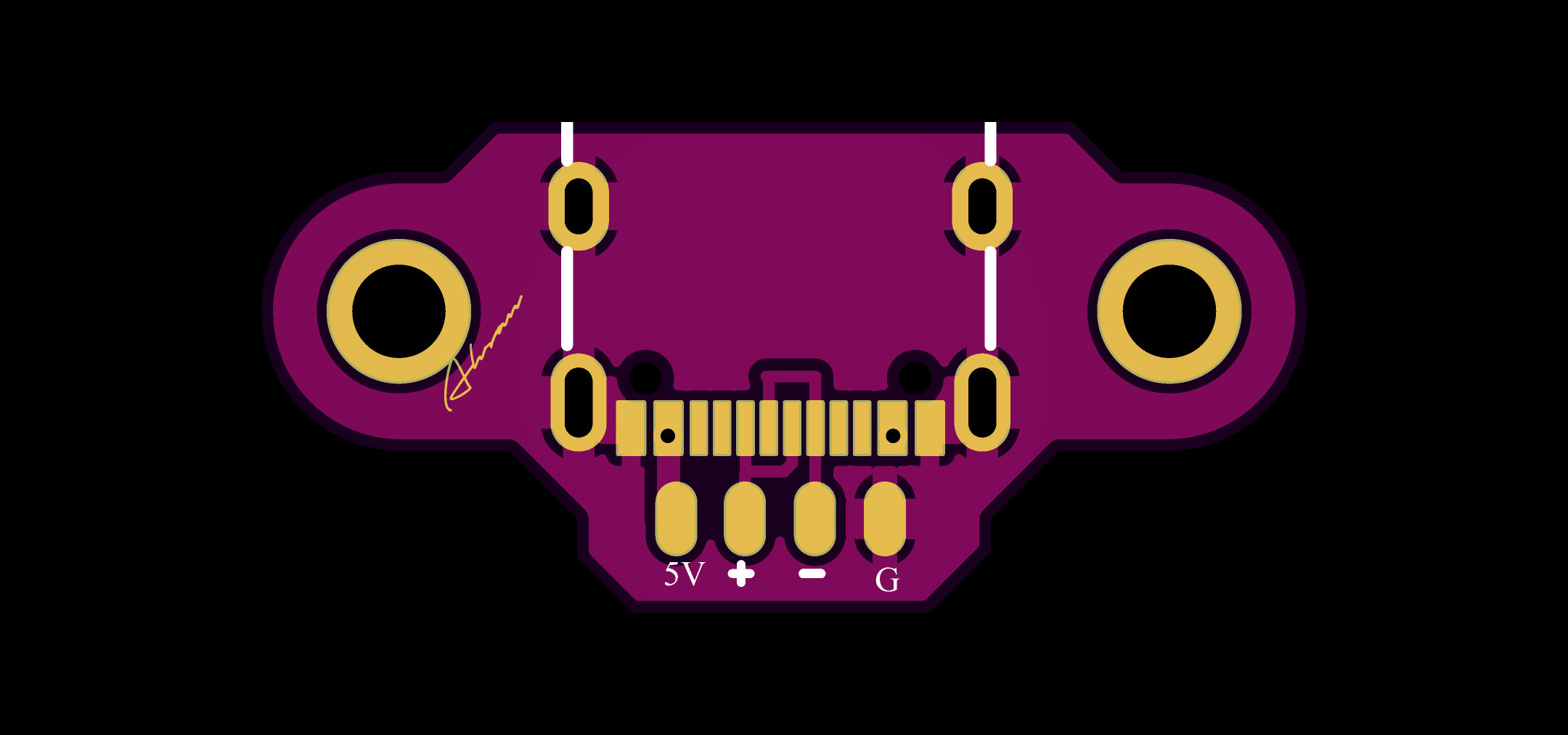


Final Result
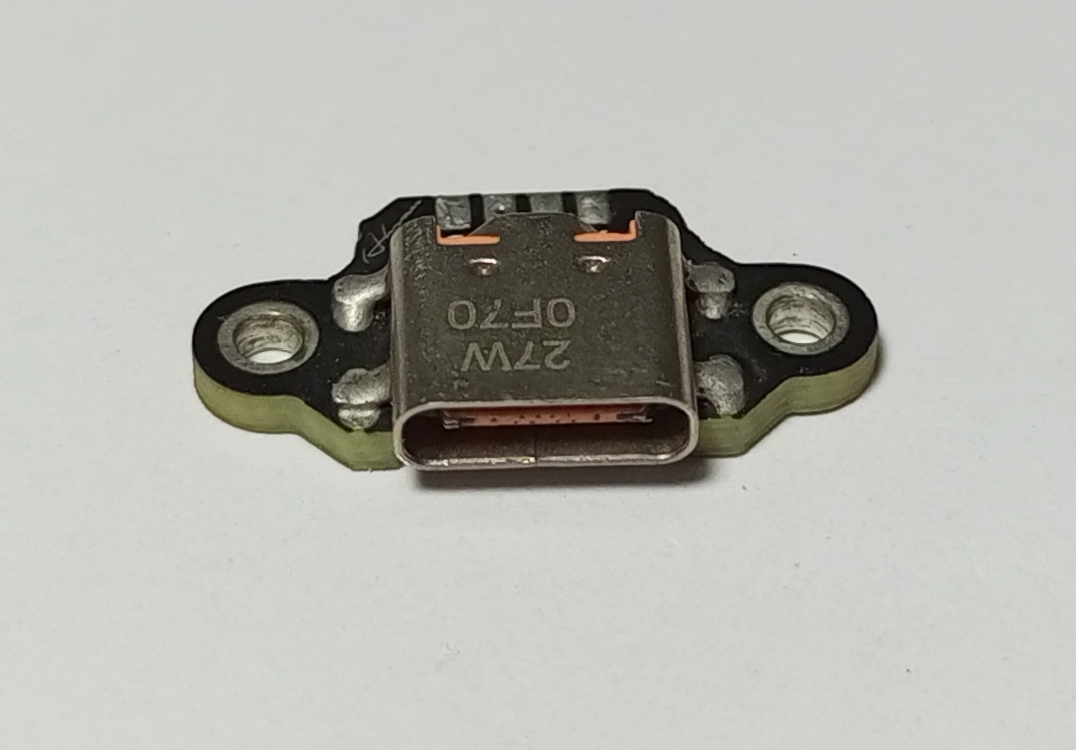
Receiver PCBs
8-channel PWM+PPM Receiver PCB
The 8-channel receiver supports both PWM and PPM outputs. It is based on the NRF24L01 and STM32F103C8T6 for signal decoding and generation.
Schematic and PCB Layout
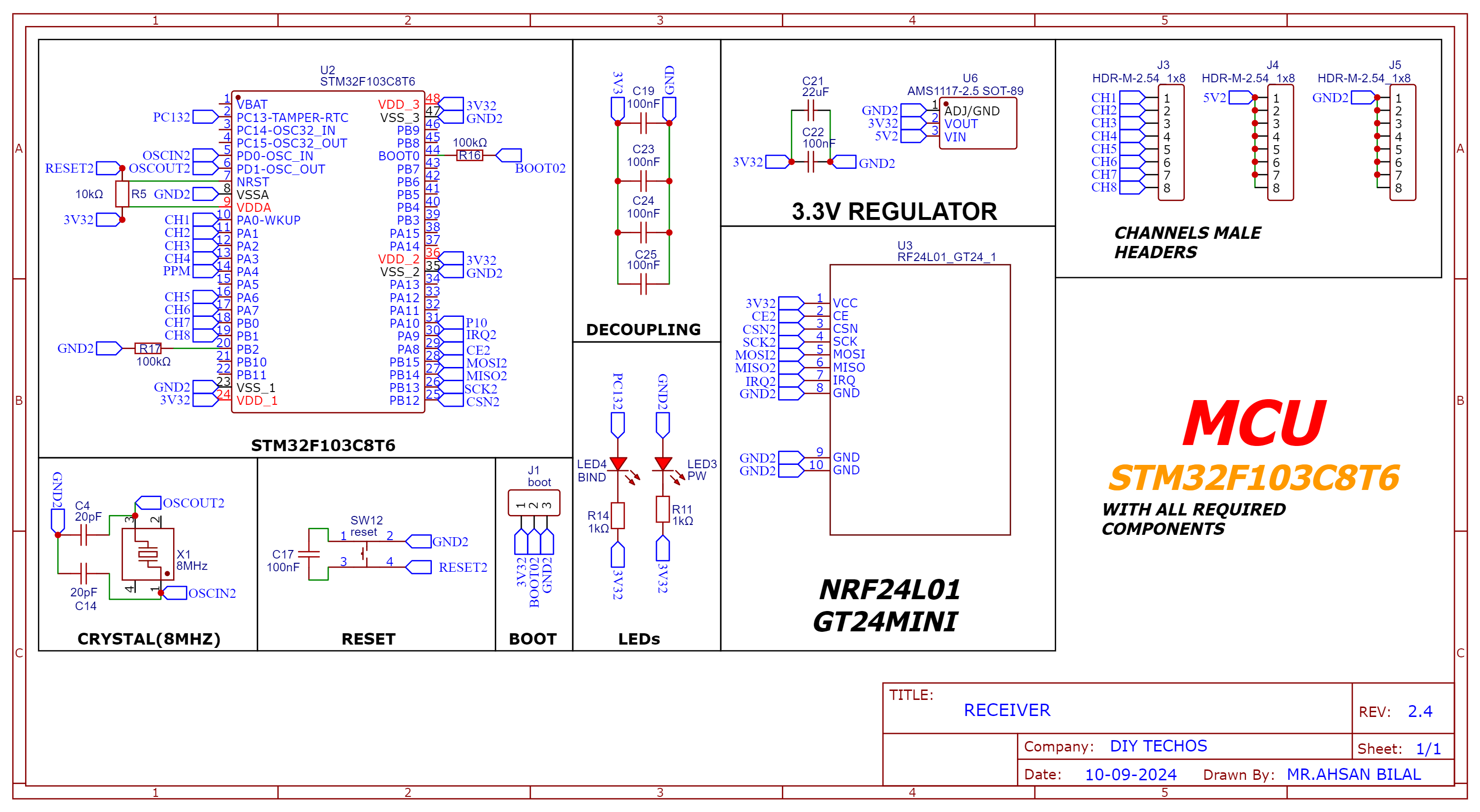
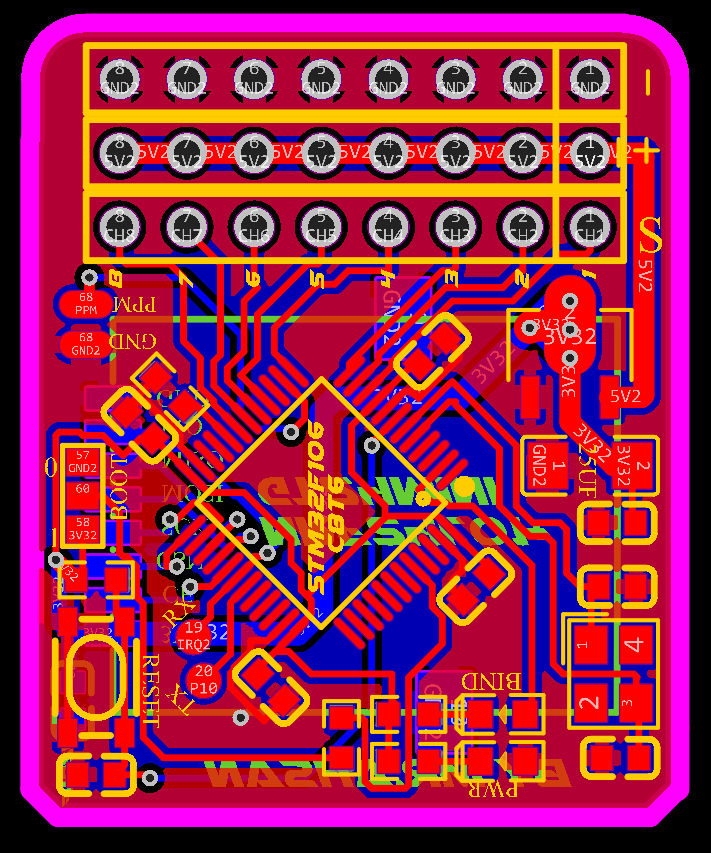
2D and 3D Preview

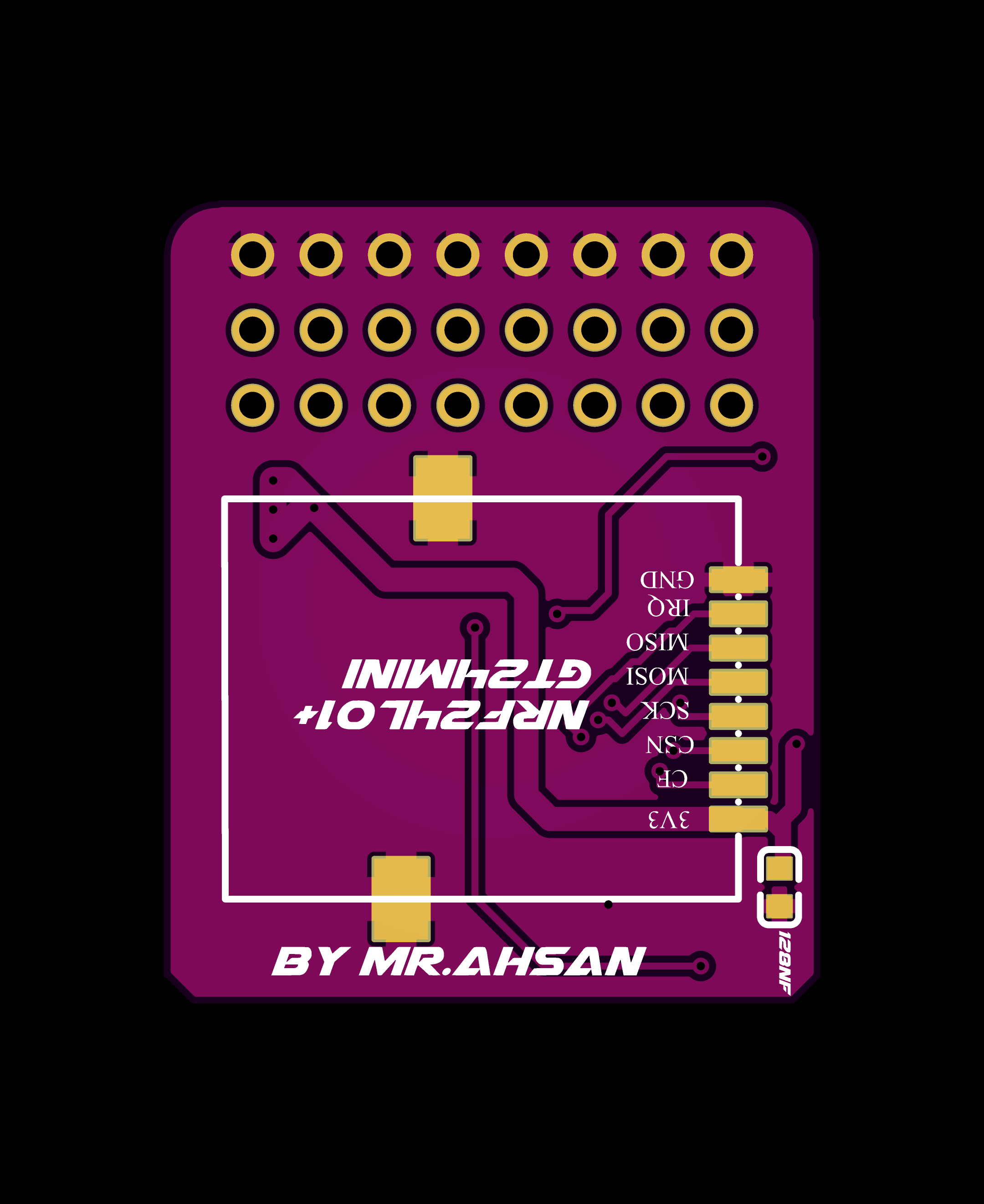


Final Result
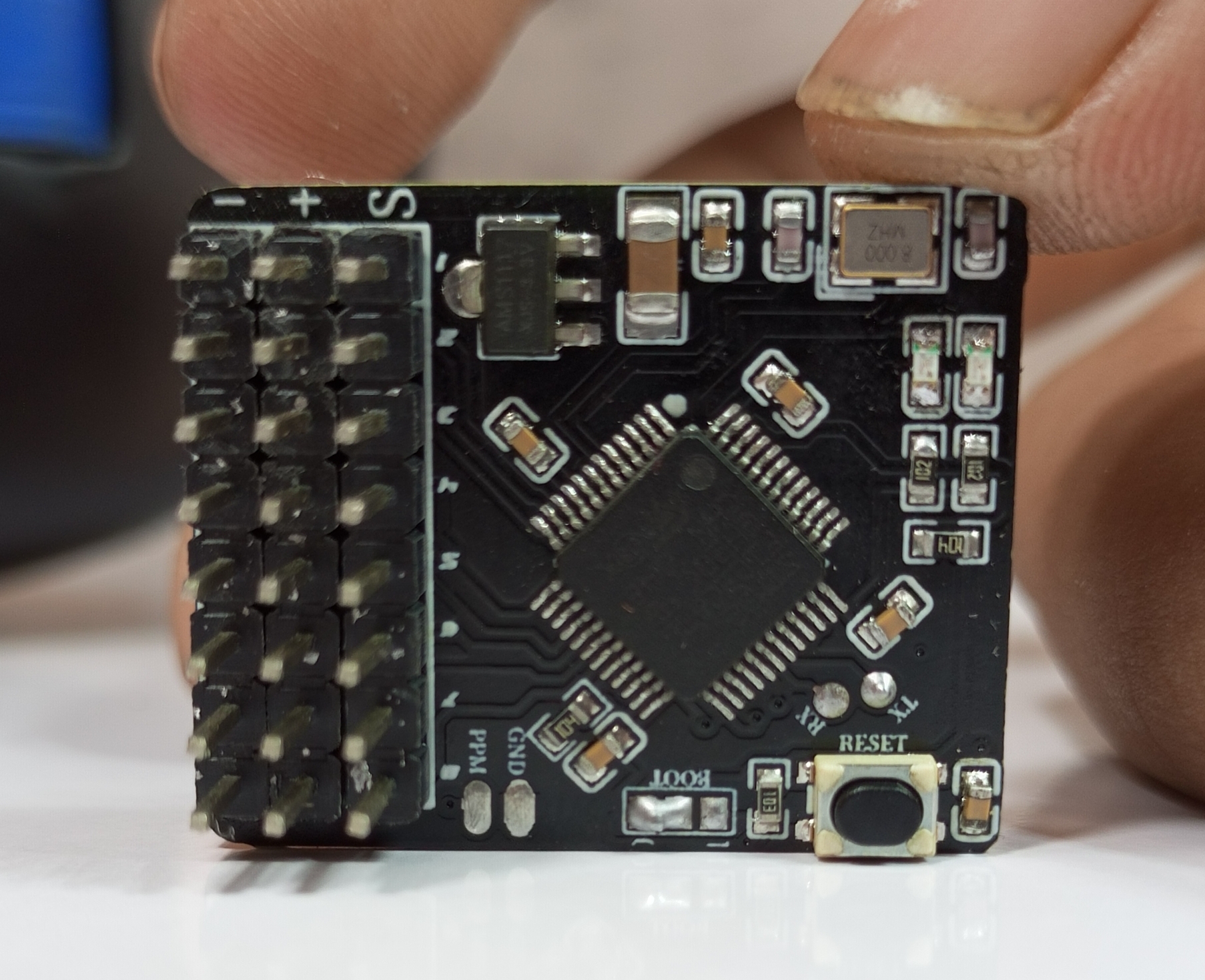
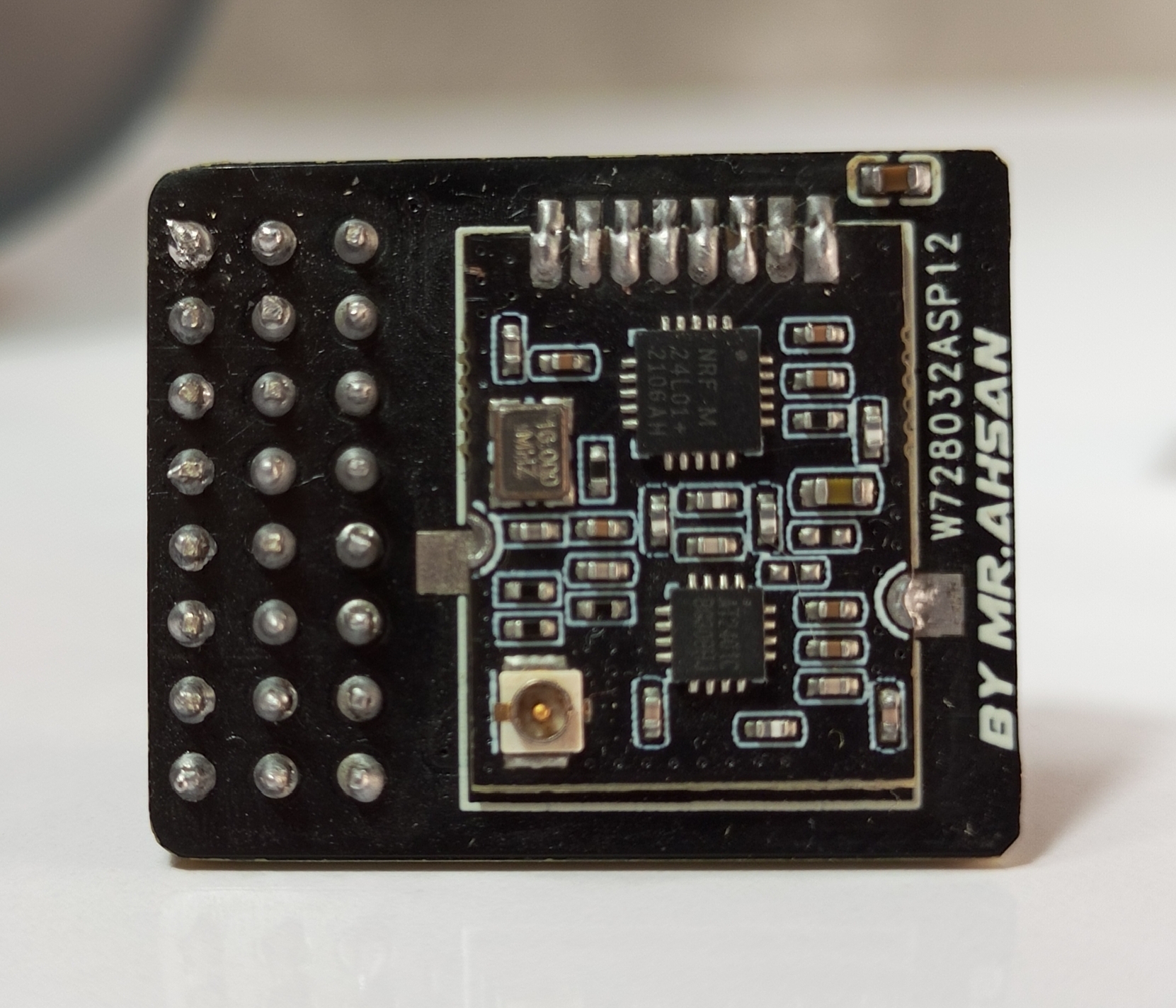
PPM+SBUS Receiver PCB
The PPM+SBUS receiver is another compact design focused on supporting more advanced control protocols. It also features the STM32F103C8T6 for signal processing and output.
Schematic and PCB Layout
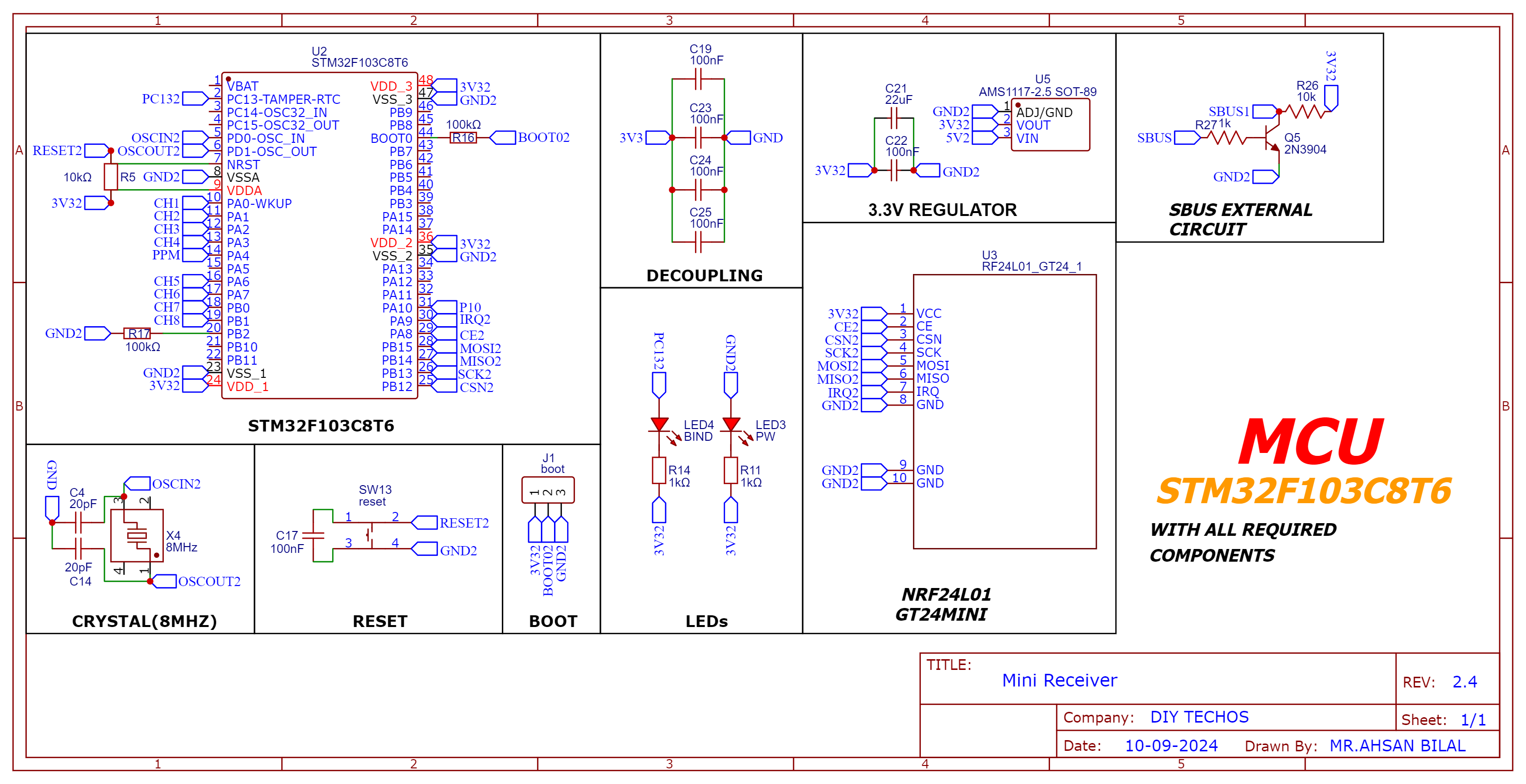
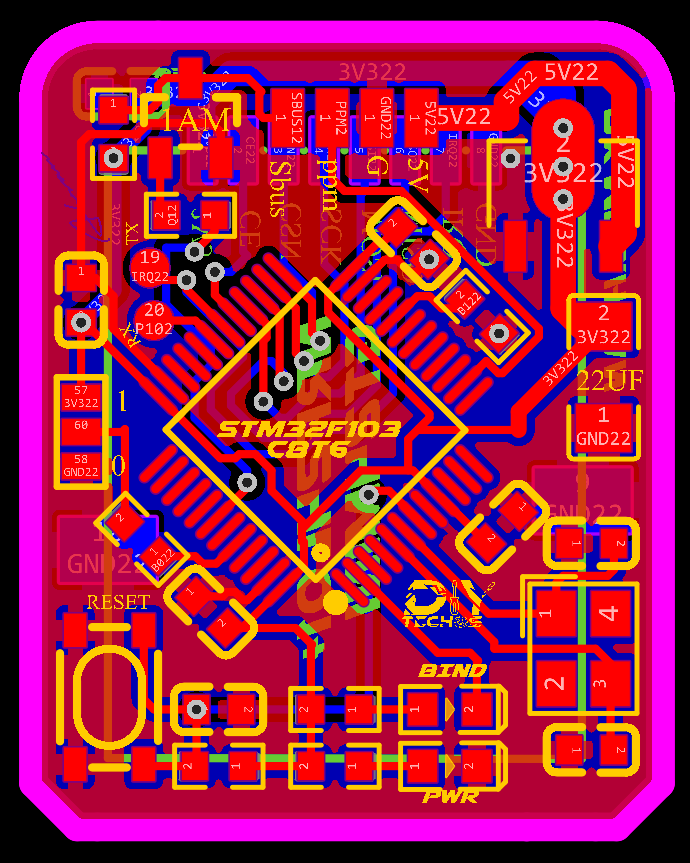
2D and 3D Preview
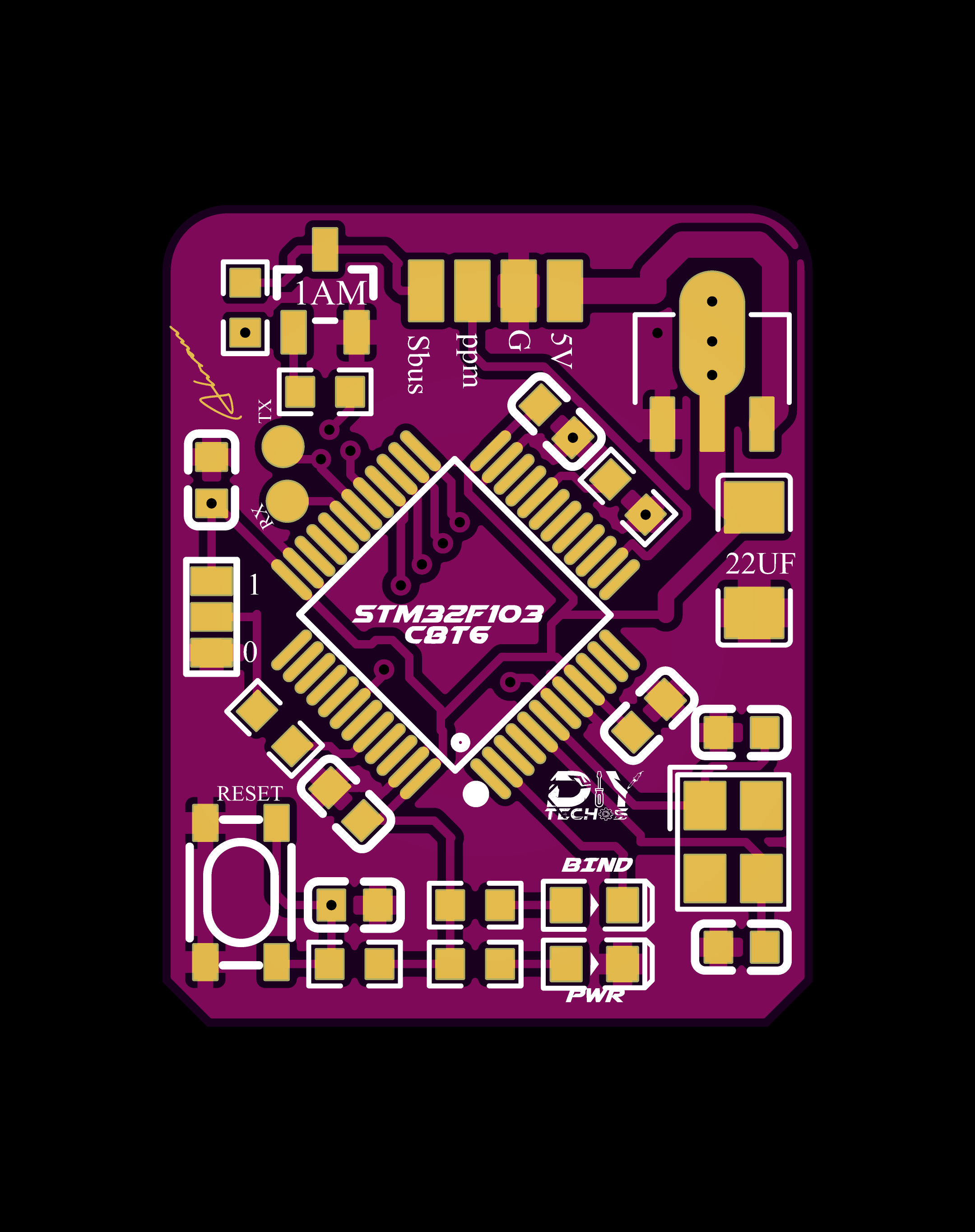
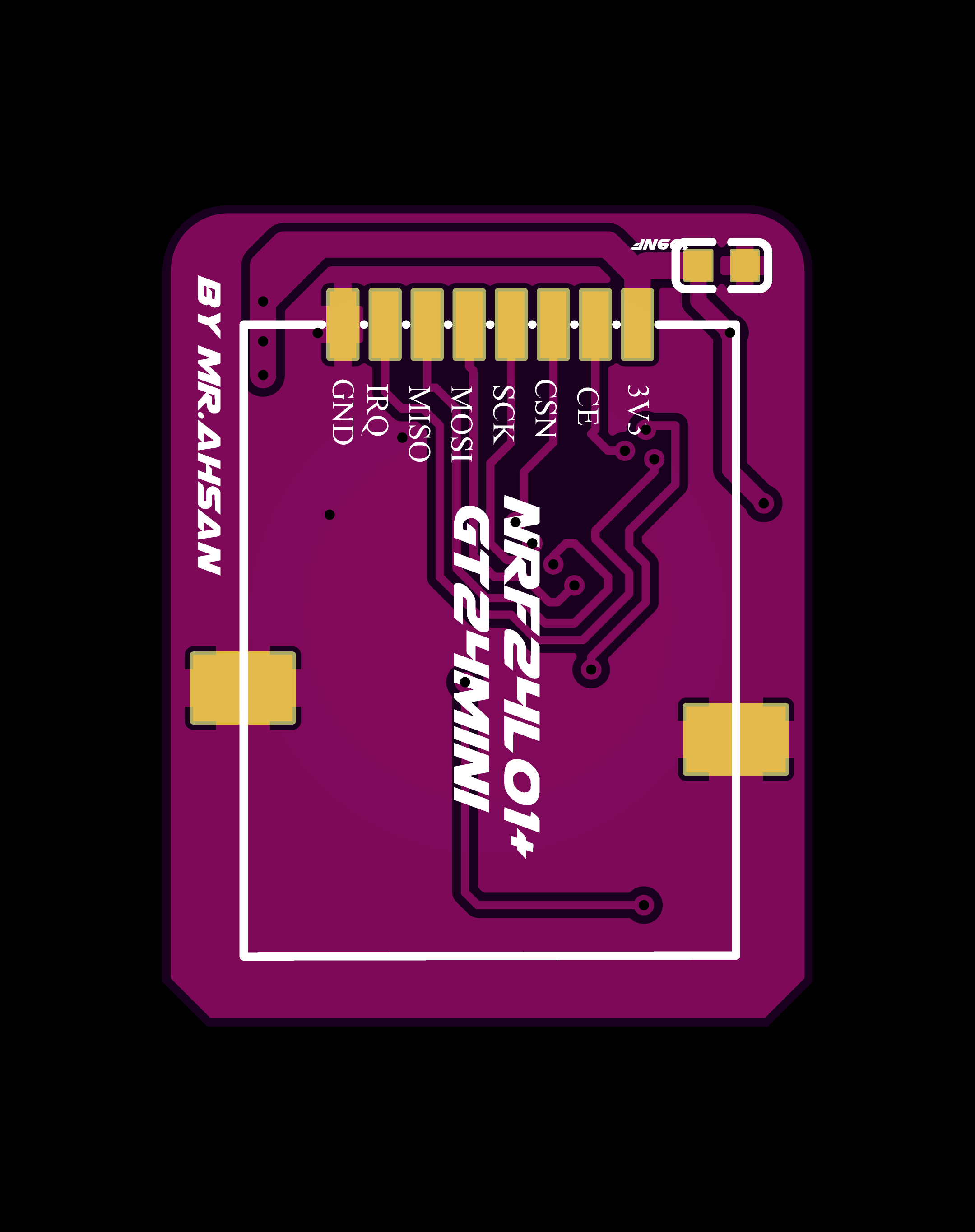


Final Result
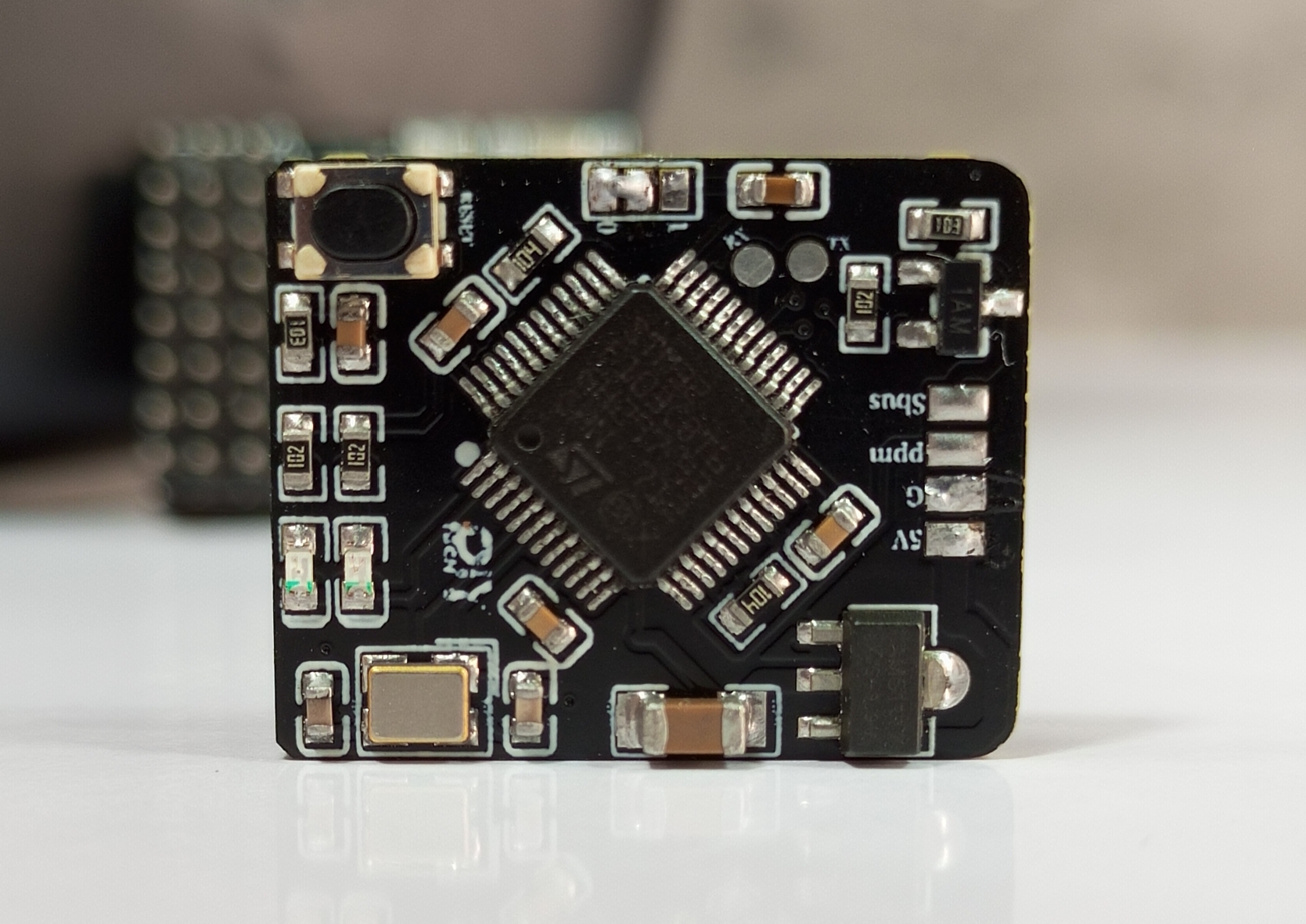
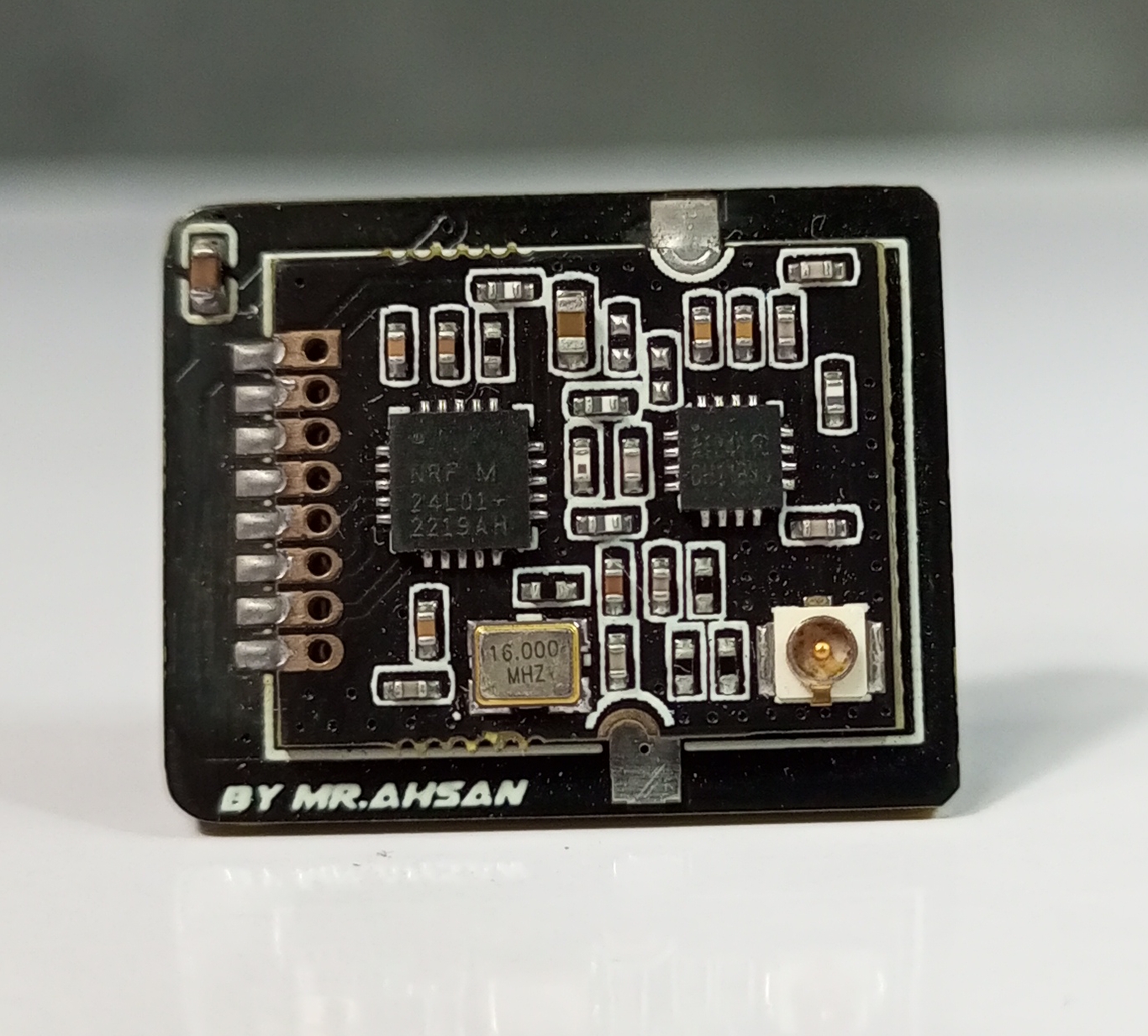
Visual and Physical Connections
I’ve designed a detailed, color-coded connection schematic for all inputs and outputs, making it easy for anyone to assemble the XRC PRO transmitter and receivers. Additionally, I’ve included high-quality these images in PDF format, which you can download below.
Transmitter
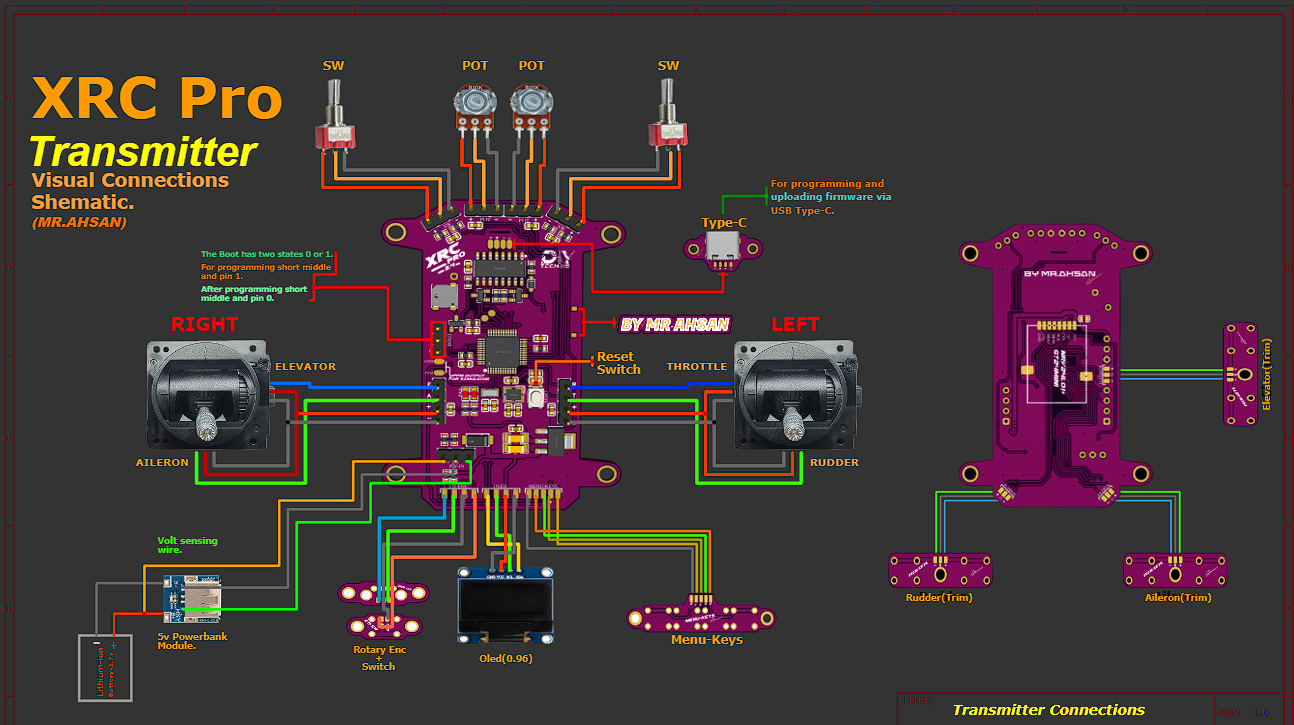
Receiver (PWM+PPM)
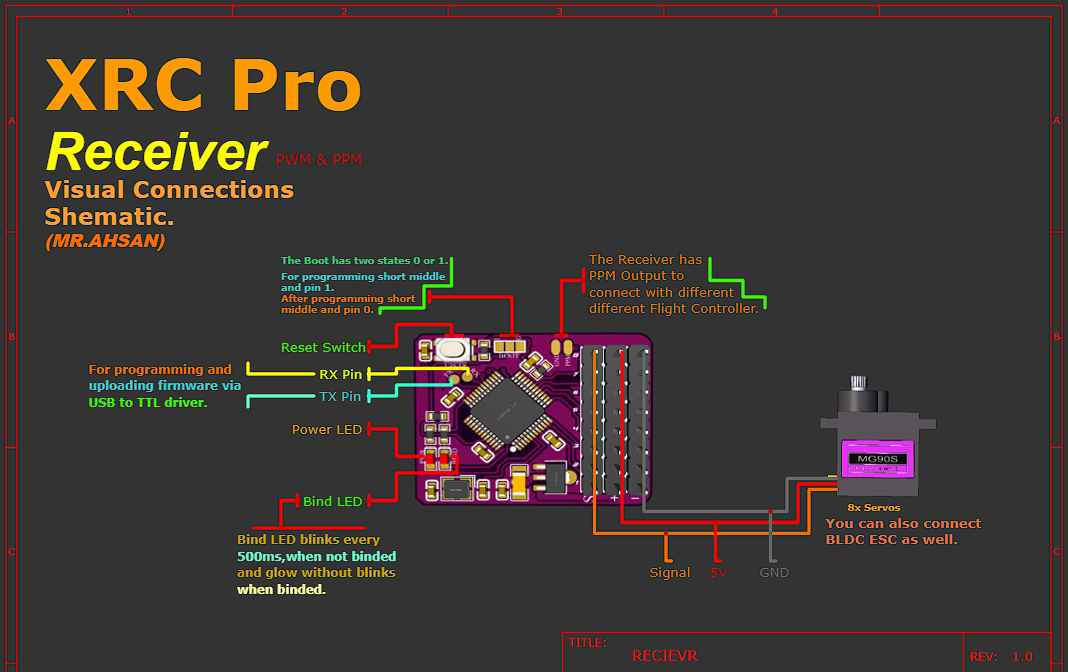
Receiver (PPM+SBUS)
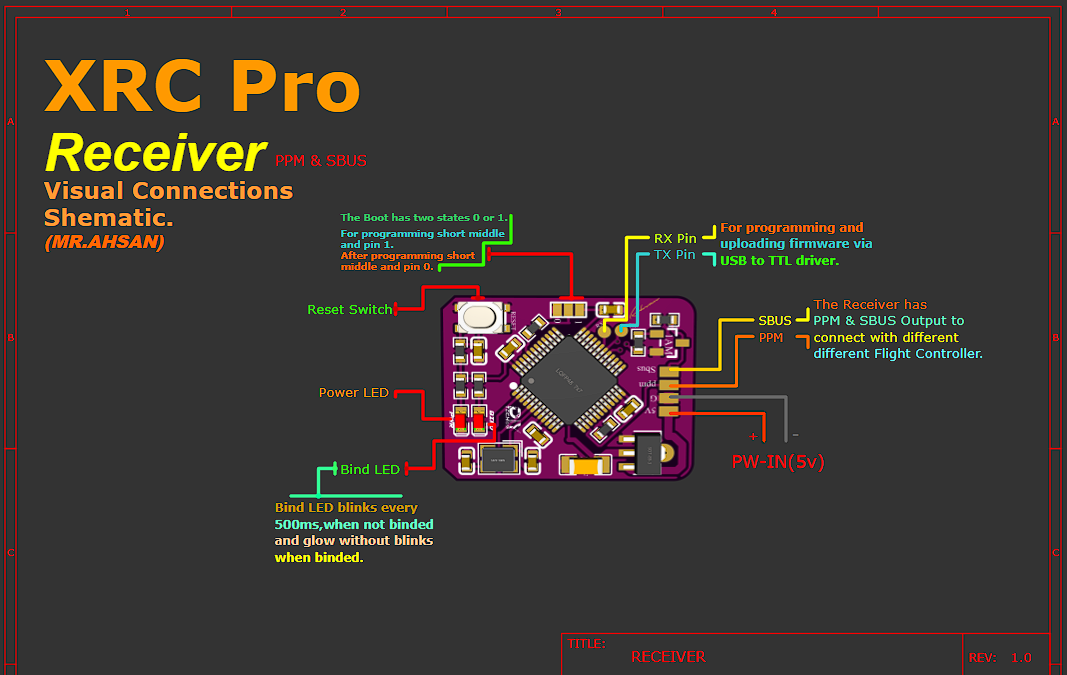
Firmware Overview
The XRC PRO's firmware is developed in Keil uVision using the CMSIS framework for STM32. It is fully open source, with modular code to allow easy customization and extension of the system's capabilities. The main focus of the firmware is on handling communication between the transmitter and receivers, as well as managing the various control inputs.
Here the whole files in KeiluVision:
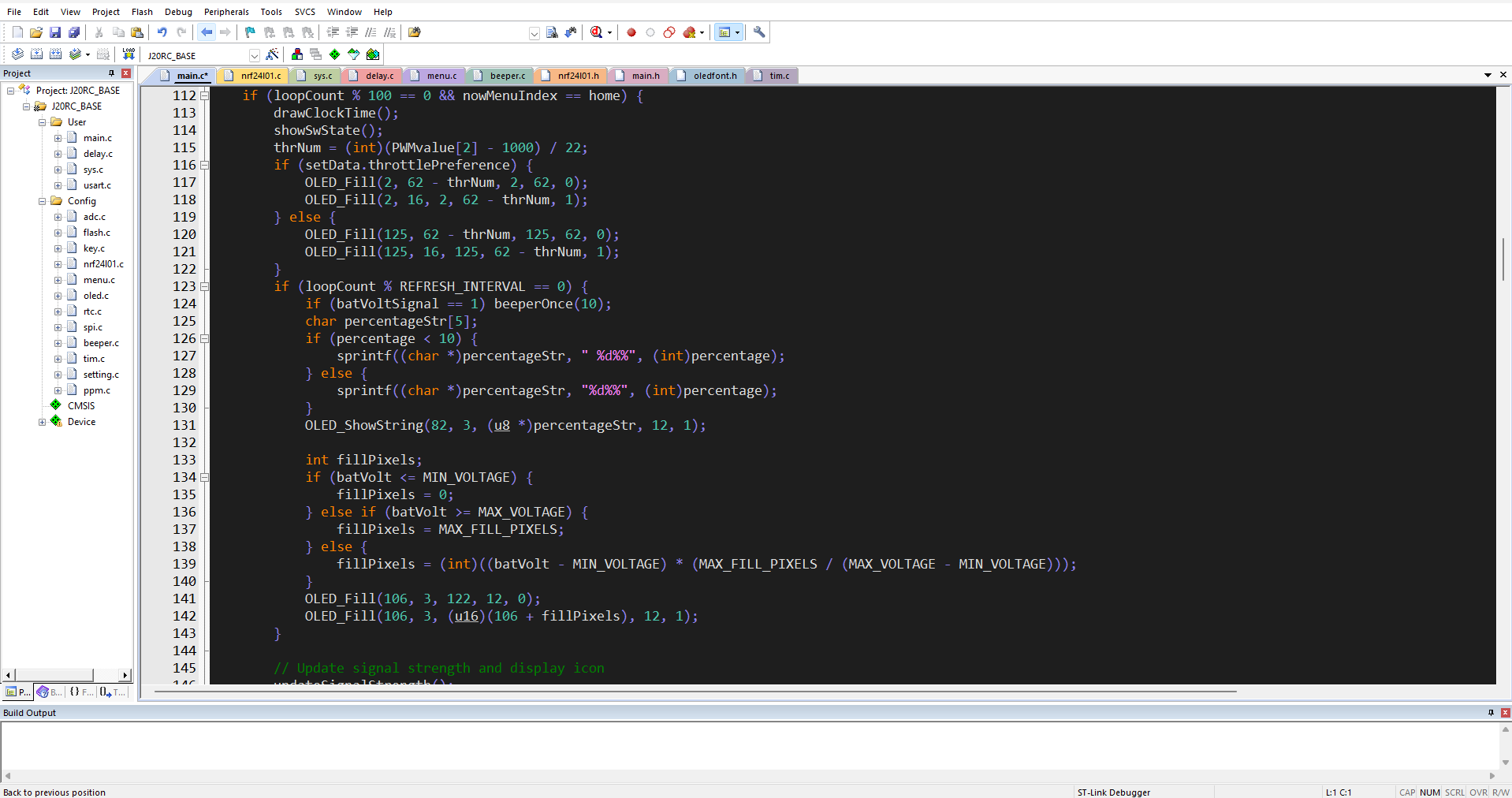
Below are the functions broken down from the main execution code, organized into smaller functional blocks. These functions are intended to be modular and handle specific tasks like initialization, signal strength calculation, display management, and event handling:
1. setup()
This function initializes all the necessary hardware peripherals and sets up the system for operation.
void setup() { // Initialize the delay function for timekeeping delayInit(); // Initialize USART for serial communication usart1Init(); // Initialize timers for PWM and other timing-related functions timer2Init(); timer3Init(); // Initialize DMA for memory transfers dmaInit(); // Initialize ADC for analog reading (e.g., battery level) adcInit(); // Initialize NRF24L01 for wireless communicationif (nrf24l01Init() == NRF_OK) { nrf24l01SetModeTX(); // Set NRF to transmit mode } else { // Handle NRF24L01 initialization error beepError(); } // OLED display initialization and show start-up screen oledInit(); oledShowLogo(); // Perform throttle self-check and configure NRF24L01 power mode throttleSelfCheck(); // Set up low-power mode if necessary lowPowerModeConfig(); }
2. loop()
The main loop that continuously runs during operation. It handles the display updates, signal strength checks, and key events.
void loop() { // Handle clock alarms and time display on the OLED handleClockAlarm(); // Update OLED display with throttle values and battery percentage displayThrottleValues(); displayBatteryLevel(); // Update signal strength display updateSignalStrength(); // Check for key events and menu navigation keyEventHandle(); // Handle menu events, if any menuEventHandle(); // Small delay to avoid constant polling delay(50); }
3. keyEventHandle()
Handles user input through key presses. This function updates throttle settings and processes navigation within the menu.
void keyEventHandle() { if (isKeyPressed(KEY_LEFT)) { // Adjust throttle channel for left-hand throttle adjustThrottleLeft(); } if (isKeyPressed(KEY_RIGHT)) { // Adjust throttle channel for right-hand throttle adjustThrottleRight(); } // Update OLED display with new throttle or menu setting oledRefresh(); // Save user data or preferences (e.g., throttle setting) saveUserDataToFlash(); }
4. addSignalStrengthSample()
Adds a new sample to the signal strength buffer and maintains a moving average of signal strength.
void addSignalStrengthSample(int newSignalStrength) { // Add new signal strength to the sample buffer signalStrengthBuffer[sampleIndex] = newSignalStrength; // Update sample index for circular buffer sampleIndex = (sampleIndex + 1) % SIGNAL_STRENGTH_BUFFER_SIZE; }
5. getAverageSignalStrength()
Calculates the moving average of the signal strength based on the collected samples. int getAverageSignalStrength() { int sum = 0; for (int i = 0; i < SIGNAL_STRENGTH_BUFFER_SIZE; i++) { sum += signalStrengthBuffer[i]; } return sum / SIGNAL_STRENGTH_BUFFER_SIZE; }
6. displaySignalIcon()
Displays the signal strength icon on the OLED based on the signal strength percentage.
void displaySignalIcon(int signalStrengthPercent) { if (signalStrengthPercent >= 75) { oledDrawIcon(iconSignal100); } else if (signalStrengthPercent >= 50) { oledDrawIcon(iconSignal75); } else if (signalStrengthPercent >= 25) { oledDrawIcon(iconSignal50); } else if (signalStrengthPercent > 0) { oledDrawIcon(iconSignal25); } else { oledDrawIcon(iconSignalOff); } }
7. NRF24L01 Initialization
Initializes the NRF24L01 module and sets it in transmit mode.
void nrf24l01InitAndCheck() { // Initialize NRF24L01if (nrf24l01Init() == NRF_OK) { // Set NRF24L01 to transmit mode nrf24l01SetModeTX(); } else { // Handle NRF24L01 error by beeping and showing error message beepError(); oledShowErrorMessage("NRF24L01 ERROR"); } }
8. Sending Data Packets: sendDataPacket()
This function creates a 32-byte data packet and sends it using the NRF24L01 module. The packet contains a data header and channel values (PWM data).
u8 sendDataPacket(void) { u8 chPacket[32]; // Array to hold the data packet u16 t = 0; u8 sendIsOK; // Flag to check if sending is successful for (t = 0; t < 16; t++) { if (t == 0) // Add data header (0x00) { chPacket[2 * t] = 0x00; chPacket[2 * t + 1] = 0x00; } else if (t <= chNum) // Add PWM channel data { chPacket[2 * t] = (u8)(PWMvalue[t - 1] >> 8) & 0xFF; // High byte of 16-bit PWM value chPacket[2 * t + 1] = (u8)PWMvalue[t - 1] & 0xFF; // Low byte of 16-bit PWM value } else // Fill unused bytes with 0xFF (padding) { chPacket[2 * t] = 0xFF; chPacket[2 * t + 1] = 0xFF; } } sendIsOK = NRF24L01_TxPacket(chPacket); // Transmit the packetreturn sendIsOK; // Return status of the transmission (success or failure) }
9. Signal Strength Calculation: getSignalStrength()
This function measures the signal strength by sending multiple packets and calculating the percentage of successful transmissions.
int getSignalStrength(void) { const int totalPackets = 40; // Total number of packets to sendint successfulPackets = 0; // Counter for successful transmissions if (setData.NRF_Mode == ON) // If the NRF mode is ON { NRF24L01_TX_Mode(setData.NRF_Power); // Set NRF to transmit mode } else { NRF24L01_LowPower_Mode(); // Otherwise, set it to low-power mode } // Loop to send multiple packetsfor (int i = 0; i < totalPackets; i++) { if (sendDataPacket() == TX_OK) // If the packet was sent successfully { successfulPackets++; // Increment success counter } delay_us(700); // Short delay between transmissions } // Calculate signal strength as a percentage of successful packetsint signalStrength = (successfulPackets * 100) / totalPackets; return signalStrength; }
10. updateSignalStrength()
Updates the signal strength display and checks if the receiver is connected. It also adds a new sample to the signal strength buffer.
void updateSignalStrength() { // Get current signal strength from NRF24L01int currentSignalStrength = nrf24l01GetSignalStrength(); // Add the sample to the signal strength buffer addSignalStrengthSample(currentSignalStrength); // Calculate the average signal strengthint avgSignalStrength = getAverageSignalStrength(); // Display the corresponding signal strength icon displaySignalIcon(avgSignalStrength); // Check if receiver is connectedif (avgSignalStrength > SIGNAL_STRENGTH_THRESHOLD) { receiverConnected(); } else { receiverDisconnected(); } }
11. menuEventHandle()
Handles the user interface menu and responds to user input for changing settings.
void menuEventHandle() { // Check if a specific menu item is selectedif (isMenuItemSelected(MENU_ITEM_PWM_ADJUST)) { adjustPWMSettings(); } if (isMenuItemSelected(MENU_ITEM_CHANNEL_CALIBRATION)) { calibrateChannels(); } // Refresh OLED display with updated menu or settings oledMenuRefresh(); }
12. Battery Voltage Display
Updates the battery level icon and percentage on the OLED based on the battery voltage. void displayBatteryLevel() { float batteryVoltage = readBatteryVoltage(); int batteryPercent = convertVoltageToPercentage(batteryVoltage); // Display the battery icon and percentage on the OLED oledDrawBatteryIcon(batteryPercent); if (batteryVoltage < BATTERY_WARNING_THRESHOLD) { // Beep to warn low battery beepWarning(); } }
13. Clock and Alarm Handling
Handles the clock and alarm functionality, beeping when an alarm is triggered.
void handleClockAlarm() { // Check if the clock alarm is activeif (isAlarmActive()) { // Beep if the alarm time is reached beepAlarm(); // Display alarm icon on the OLED oledDrawIcon(iconAlarm); } // Update the time on the OLED display displayCurrentTime(); }
These functions represent the core operations of the system, which handles initialization, user input, signal strength monitoring, display updates, and more. Each function focuses on a specific aspect of the overall operation, making the code more modular and easier to manage.
Firmware Uploading
To upload the firmware to the transmitter and receivers, follow the connection diagram below. It shows how I connected the CH340 USB-to-TTL adapter to both the transmitter and receivers.
Connections
Transmitter
There are two methods of uploading code into transmitter. First, you can directly upload the code via USB TYPE-C Interface. Second, you can upload the code with the help of USB to TTL (ch340 driver).

Receiver (PWM+PPM)
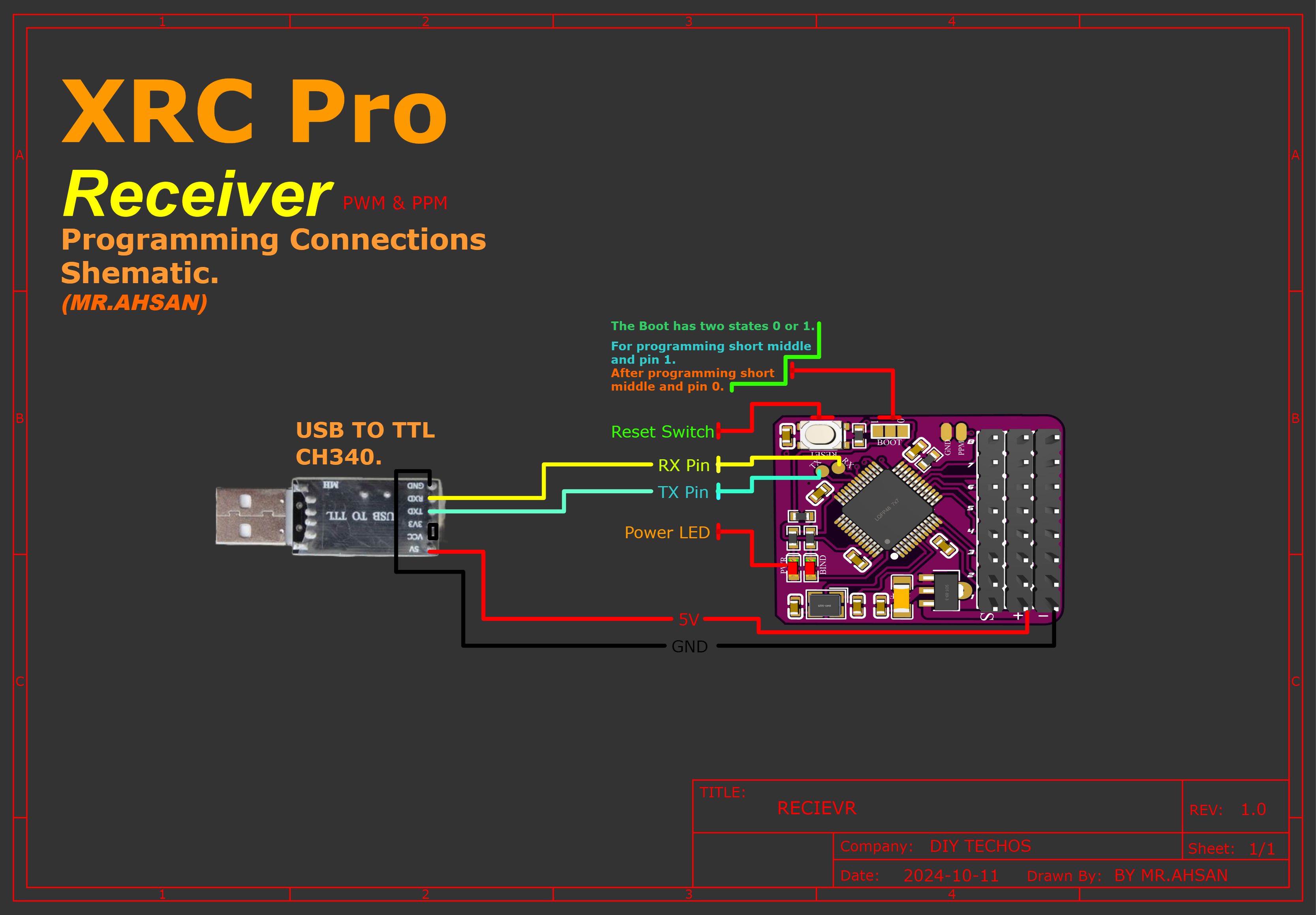
Receiver (PPM+SBUS)
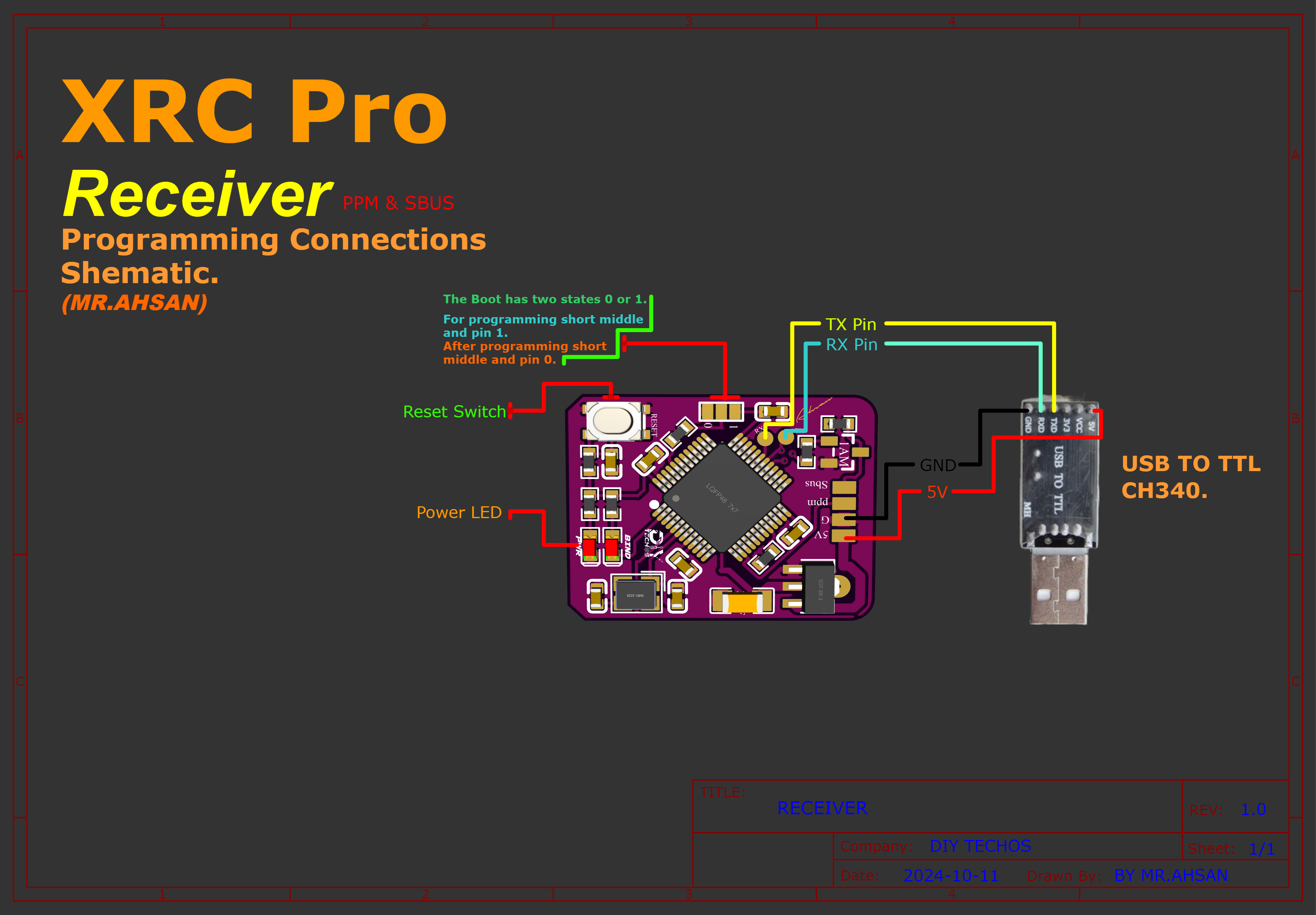
Software
Download and install the STMicroelectronics Flash Loader Demonstrator software: Click to download
Steps
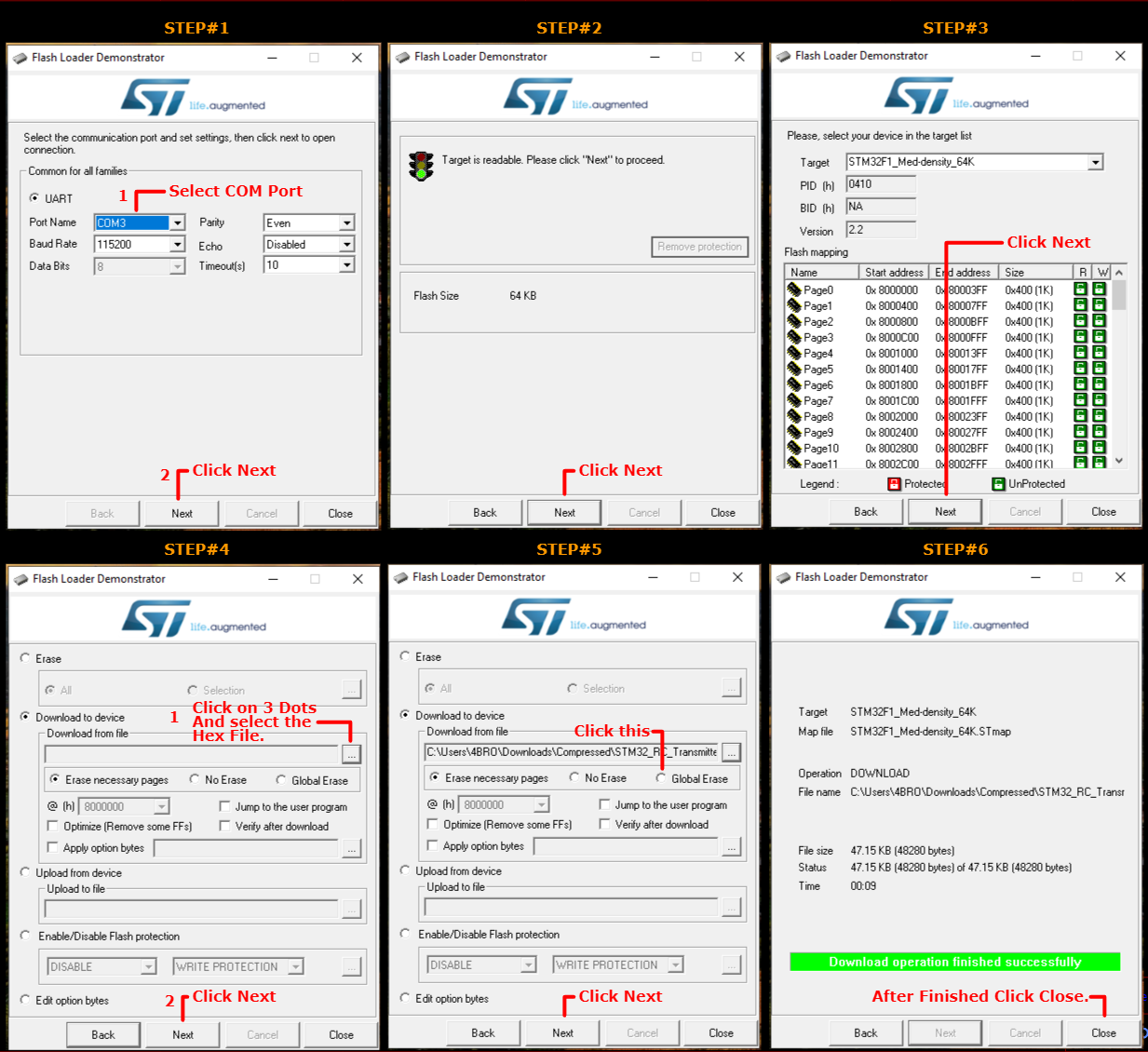
Follow:
Plug the USB serial converter into the PC.
Press the reset button on the STM32 board.
Select the COM port in the software.
Click 'Next, Next and Next.
Select Download to device. Click on 3 dots and select the hex file.
Select Global Erase. After that Click on Next
Within 15 seconds, the code will be uploaded to the device.
After finished. Click Close.

Have questions or comments? Continue the conversation on TechForum, DigiKey's online community and technical resource.
Visit TechForum






 中国
中国